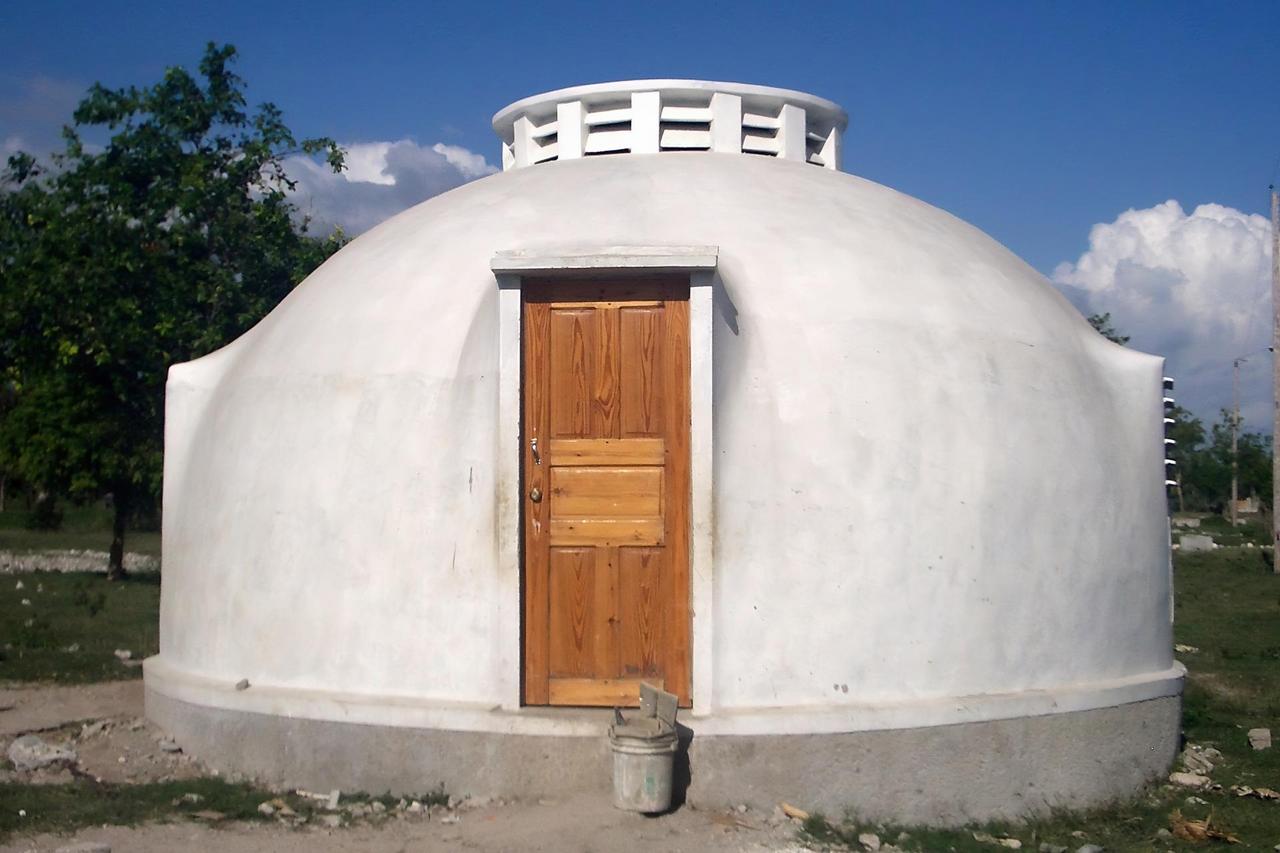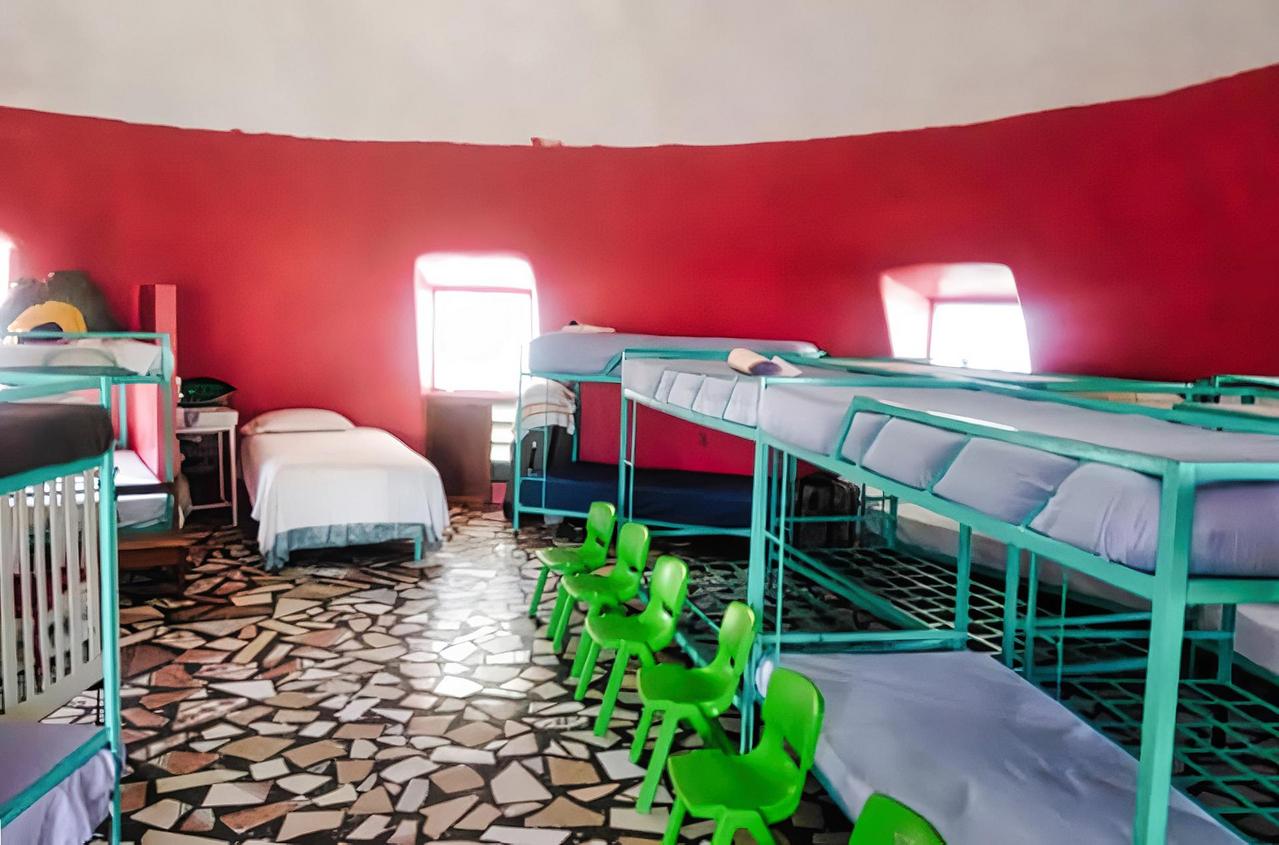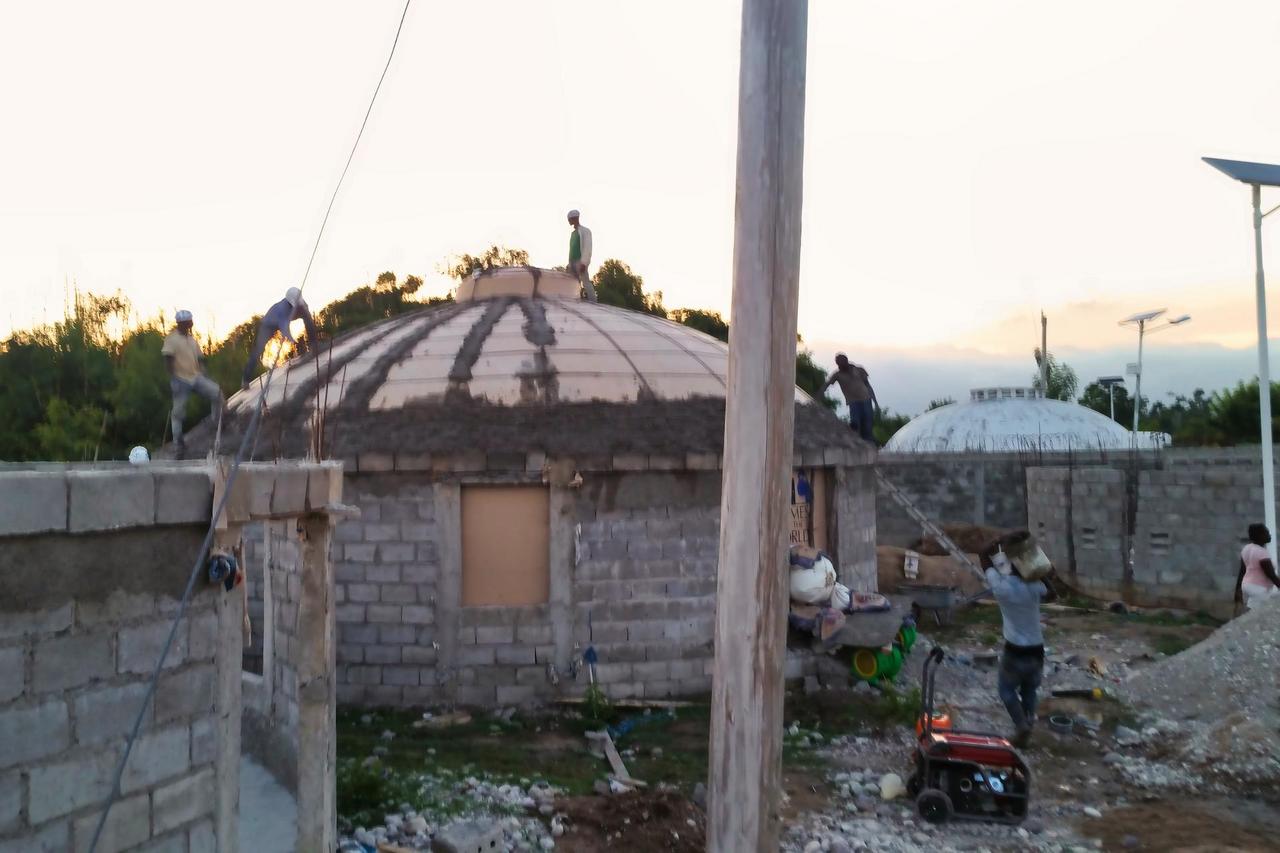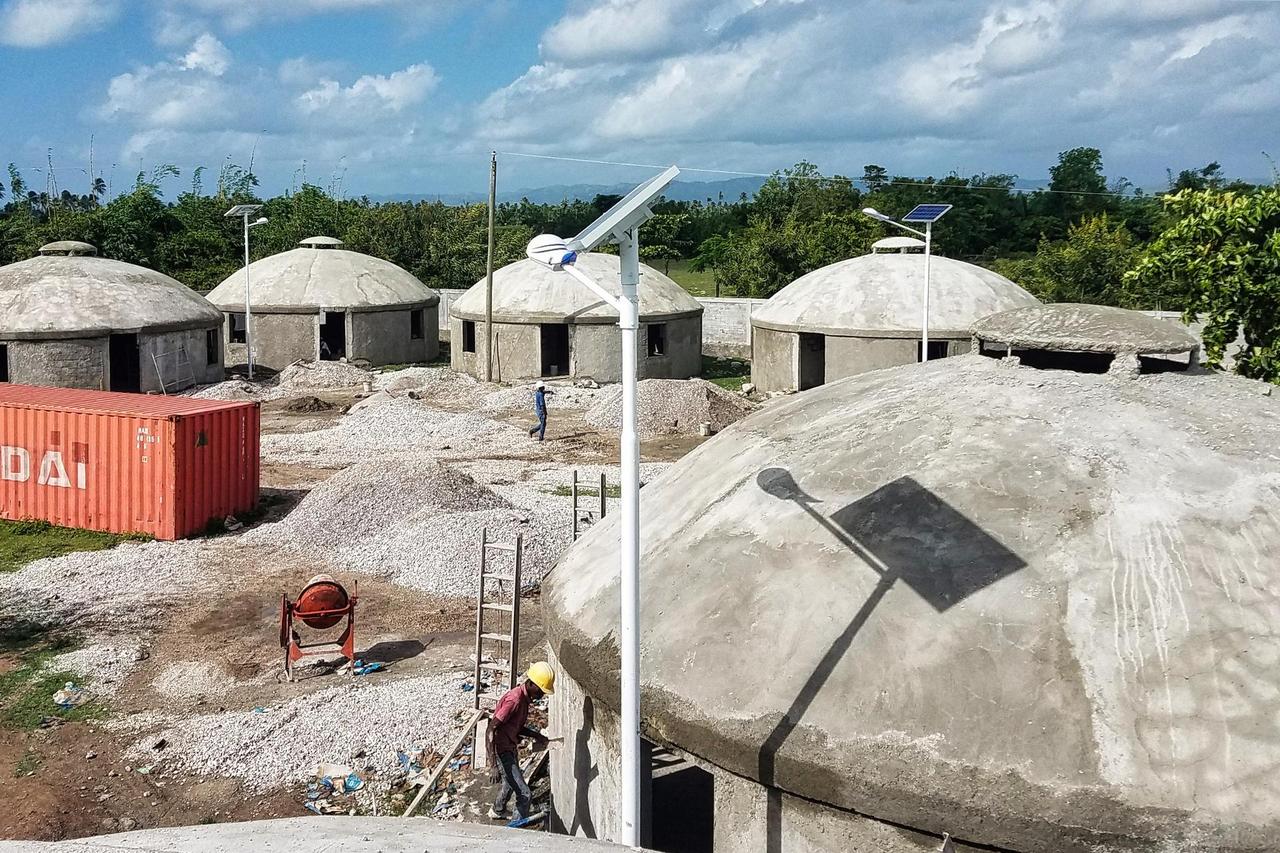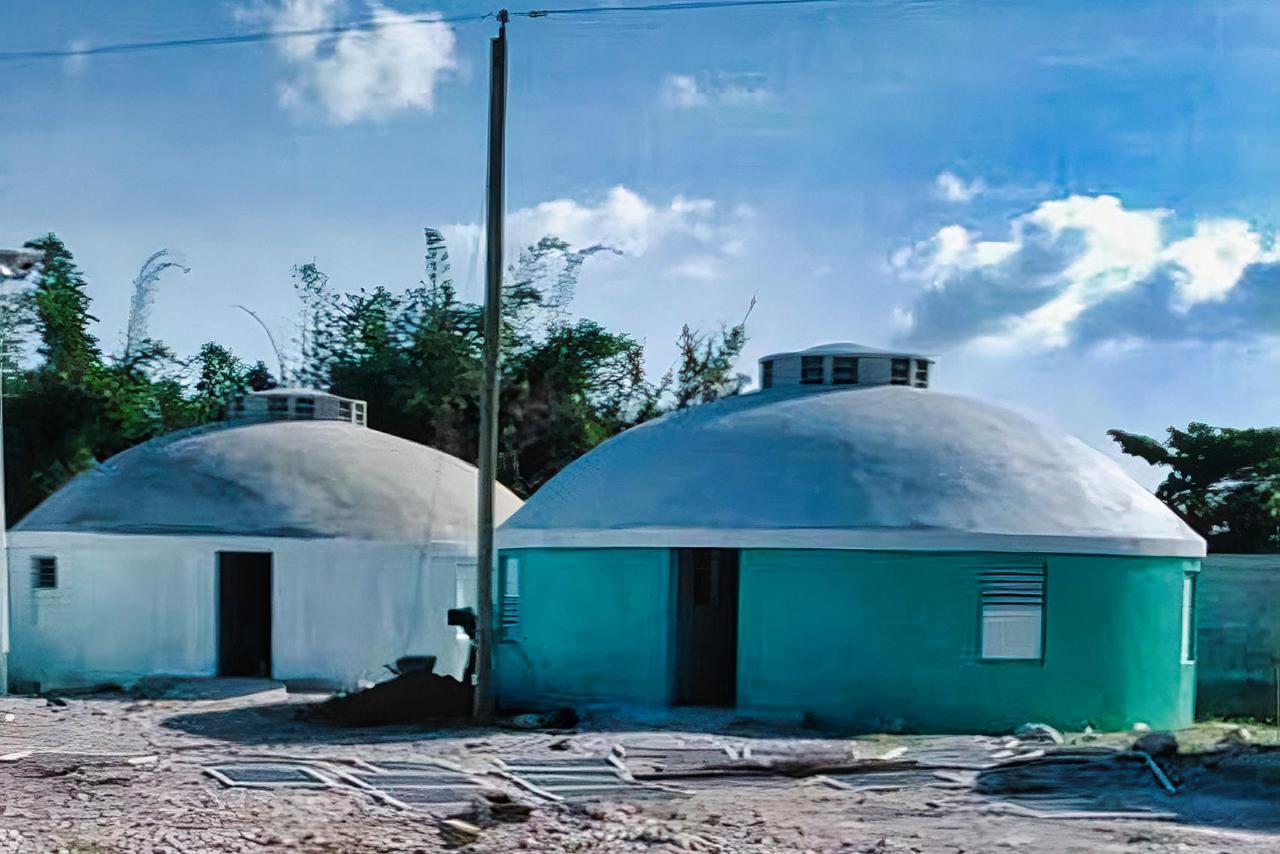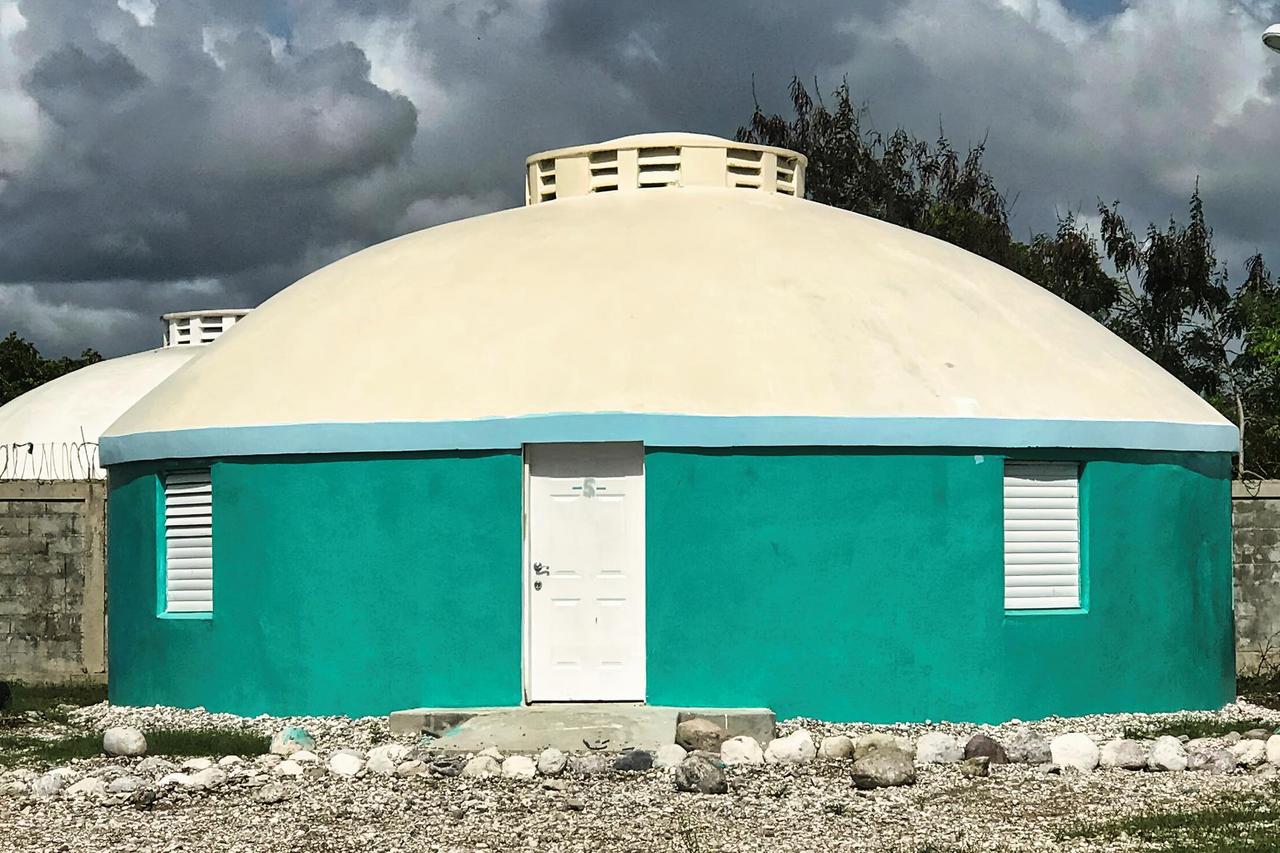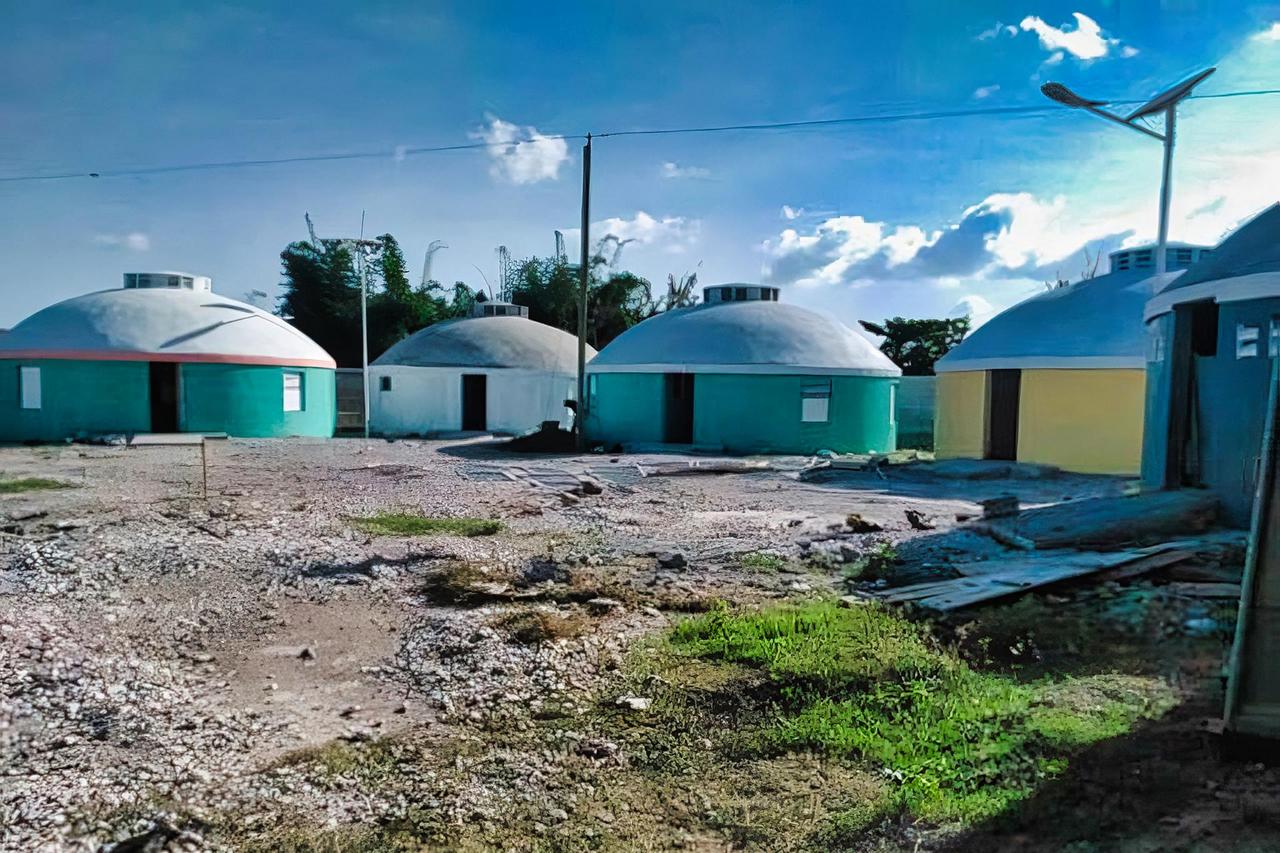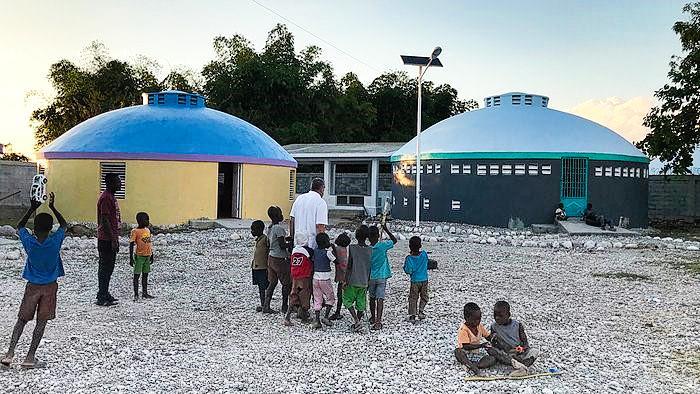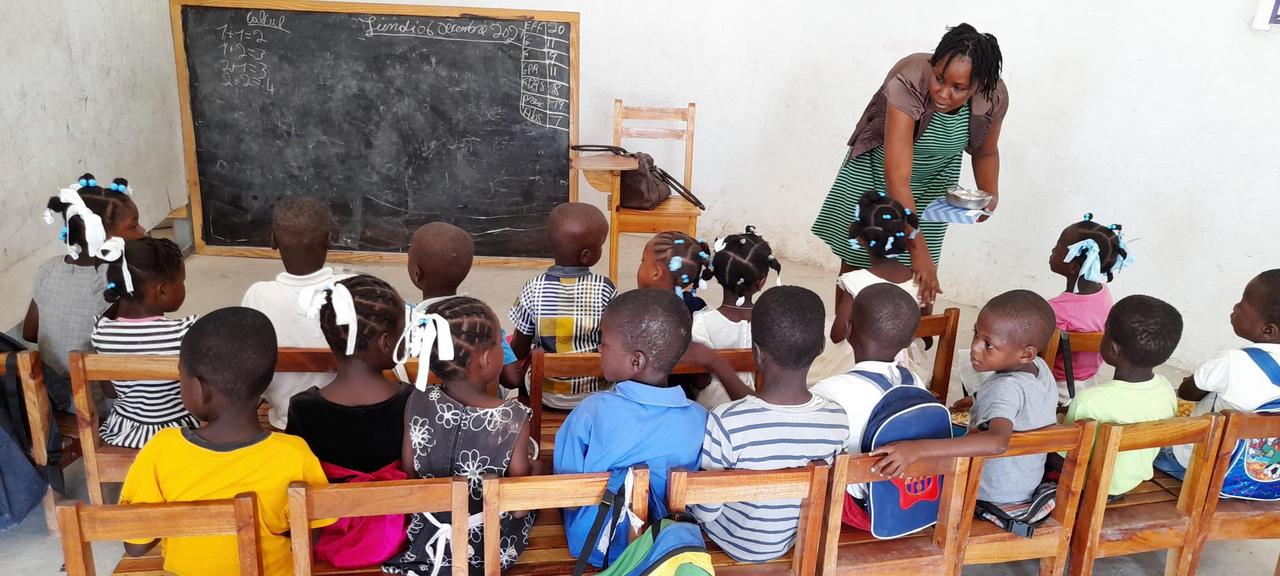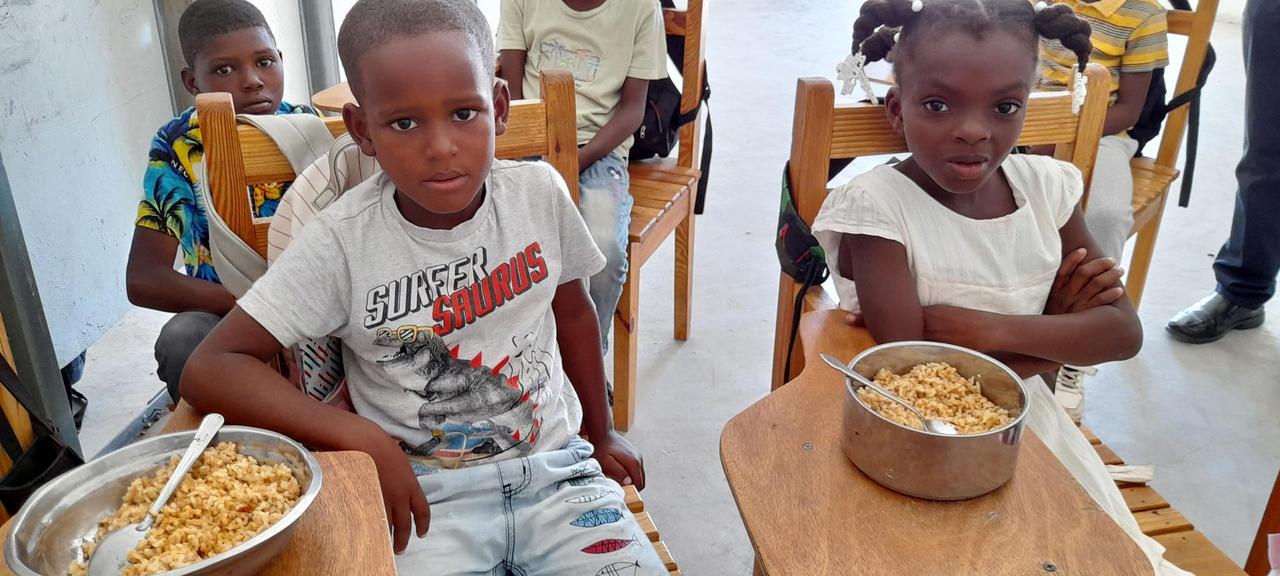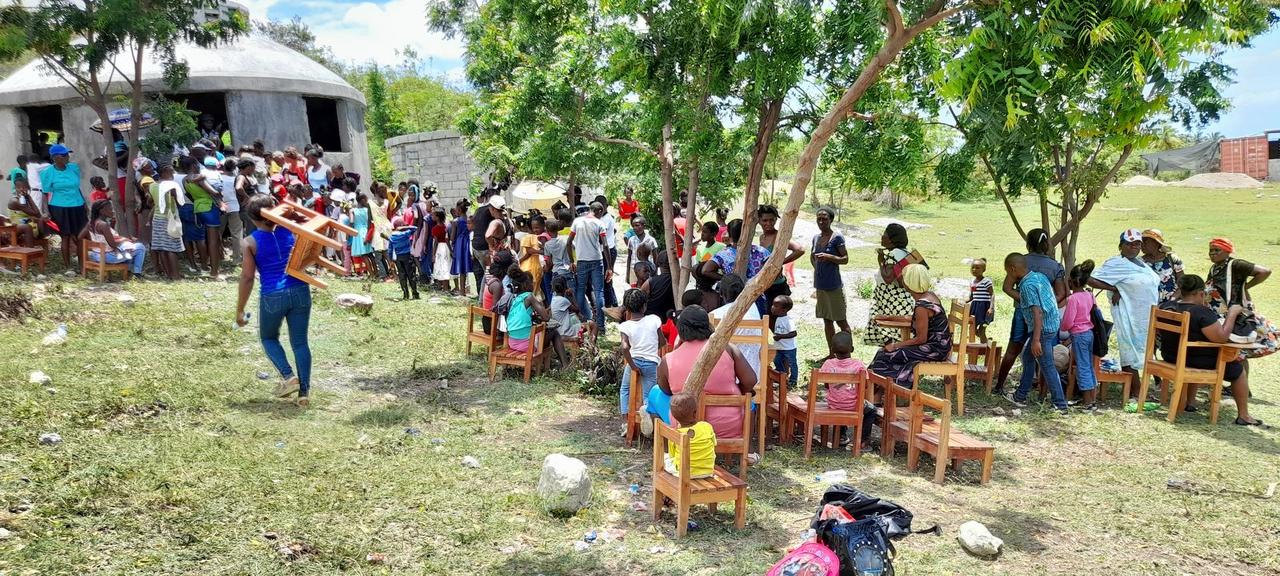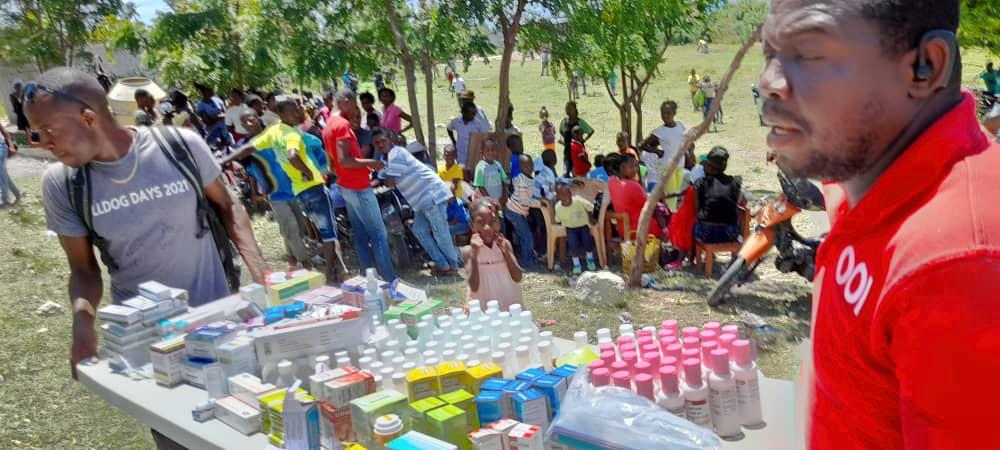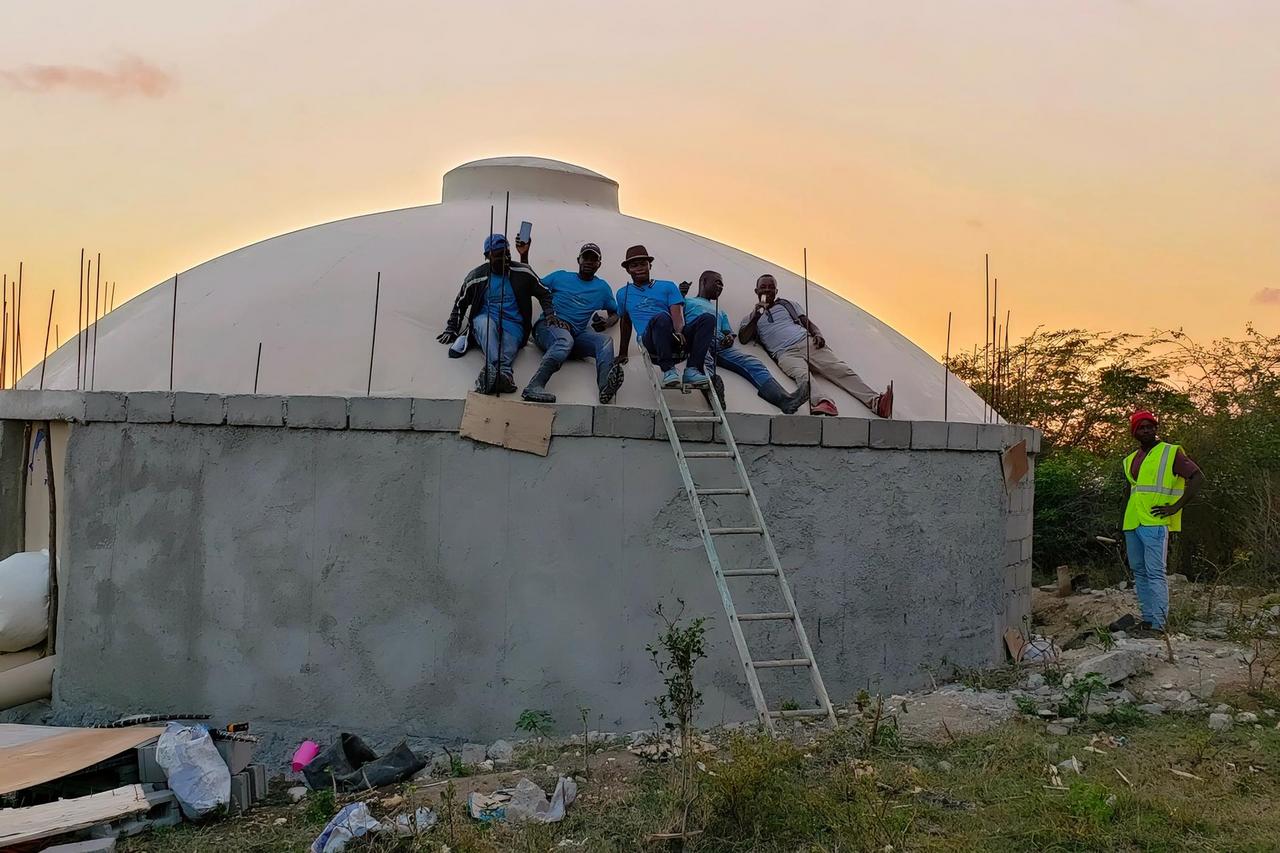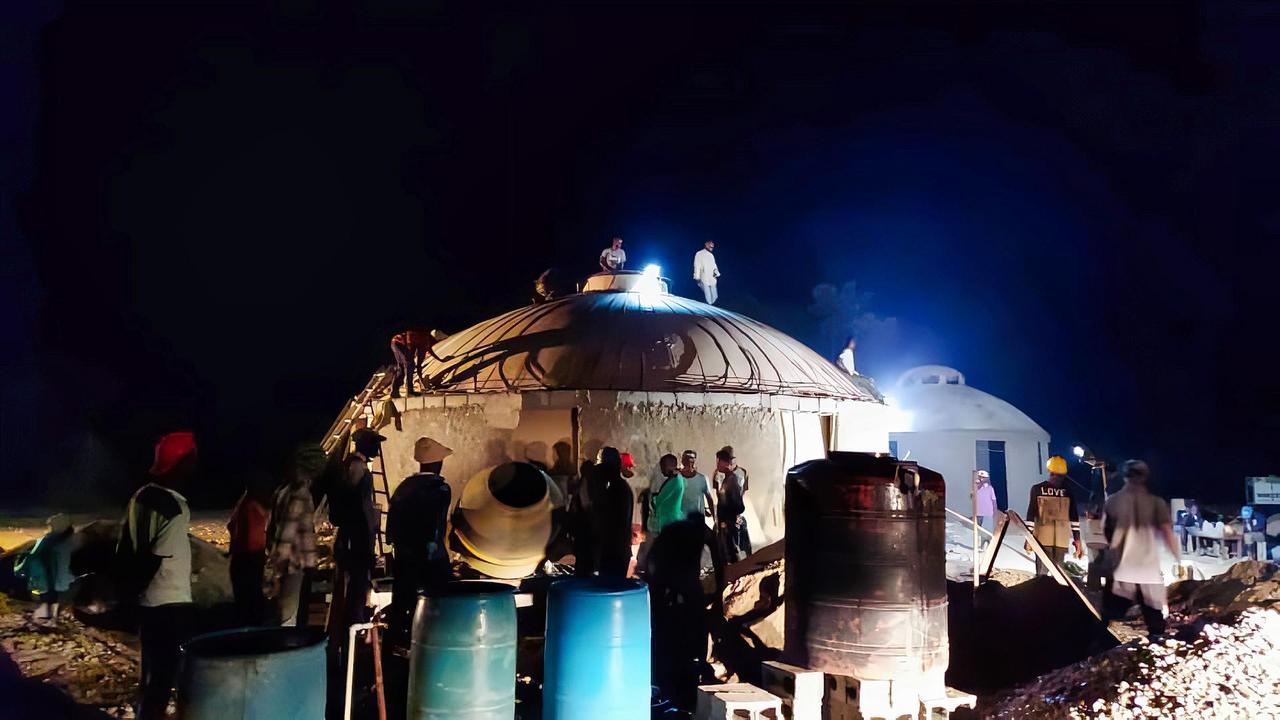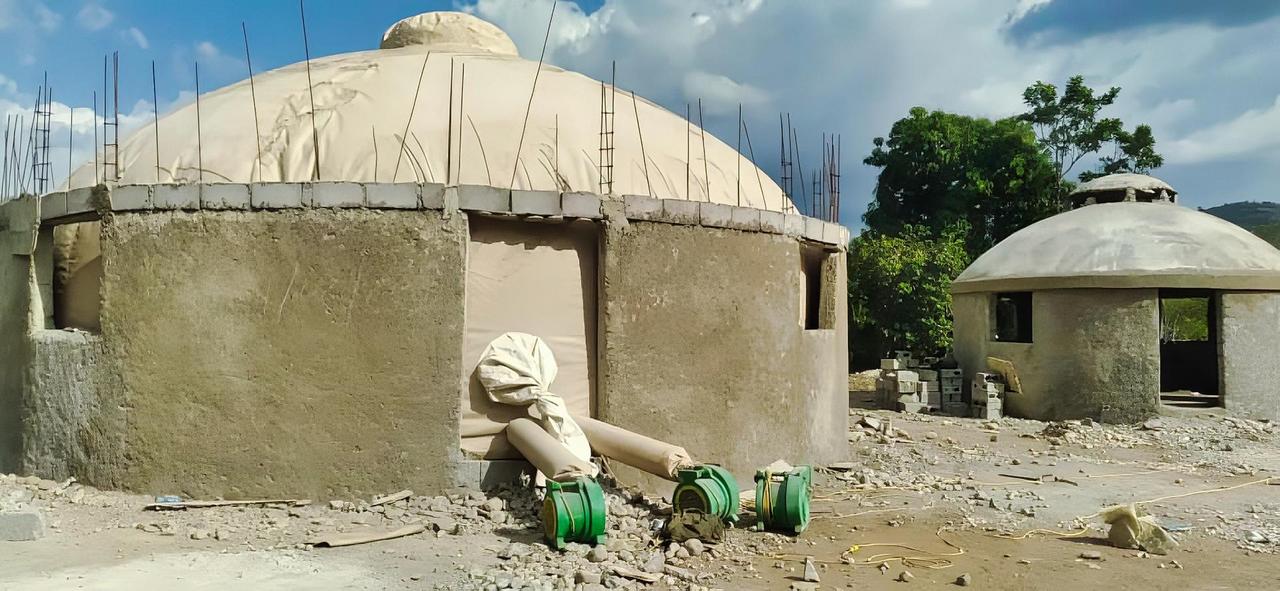Domes For The World Foundation and Overture International Partnership Continues to Evolve in Haiti
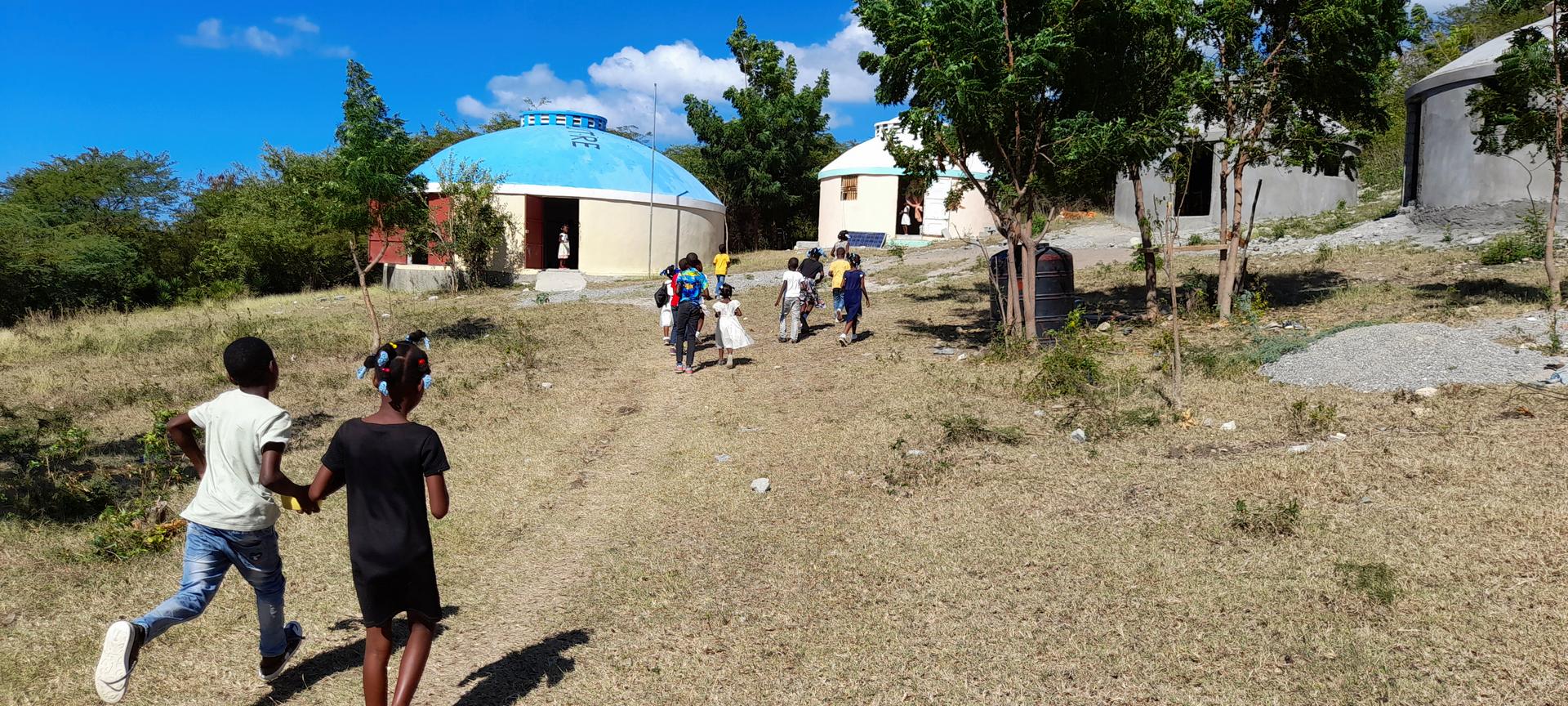
The domes built in Tiburon, Haiti were originally meant to be houses, but as soon as the first one was finished, the community began to use it as a school.
Domes For The World Foundation (DFTW) began to help construct EcoShells in Haiti over a decade ago with a local organization that aimed to expand an orphanage located along the southern coast in Les Cayes. Since then, the campus at Les Cayes has been transformed into a community outreach center, and a new organization was born, Overture Outreach International (OOI).
DFTW and OOI have worked together to build three “villages” at the Les Cayes campus for crisis care and emergency shelter (a total of 22 domes) and two more small community centers in the southern region of Haiti. One on the coastline in Tiburon and one in a more remote community of Dory, Maniche.
More work needs to be done. OOI’s goal is to build a dome community center every year for the next five years. Their network of trained outreach workers and supply and construction experts are in place, but they need more funding. Runaway inflation and political unrest have brought most development efforts in Haiti to a grinding halt. Still, OOI has the capacity to deliver life-saving services to places no other organization can reach.
This report summarizes the history of DFTW’s partnership with OOI in Haiti and what has been built so far.
Table of Contents
- Background and How It Began
- Starting Small — Construction of a Seven-Dome Campus
- Hurricane Matthew and Sweeping Change Comes to ESPWA
- New Design Used for Construction of All Domes After 2016
- The Second Campus Constructed Next to the Original Site
- The Third Campus in Les Cayes Built Around a Soccer Pitch
- Tiburon and Self Determination
- Domes in Dori
- Orphanages Emptying Across Haiti
- The Future
Background and How It Began
In 2009, Domes For The World (DFTW) began talking with a few NGOs in Haiti. After years of preparation, fundraising and groundwork, DFTW went to Les Cayes, a small town on the southern coast, to help construct a small girls’ village for a group called ESPWA. ESPWA ostensibly operated an orphanage that cared for up to 700 kids—200+ in residency. The existing structures were in disrepair after the 2010 earthquake, and they were looking to expand.
DFTW felt ESPWA was a good fit as they had a concrete need for disaster-safe buildings, knowledgeable people on staff who were ready to partner with us to achieve their goals, and materials could be sourced locally.
Going to Haiti to help ESPWA create the girls’ campus was a project not unlike what we had tackled before when rebuilding a small village in Indonesia in 2006 and constructing a women’s center in Ethiopia in 2008. DFTW’s early work underscored the need to rely on existing local groups to identify the demand for services rather than inserting foreign technology in an unknown landscape.
The perfect development partner for DFTW is a locally-based organization entrenched within the community it hopes to serve. That partner would have a need that our technology would fit better than existing local know-how and technology.
If DFTW is tasked to provide services by a third party, the first step is to seek out local partners and develop community-based functional relationships.
We believe there should always be concrete reasons why a project needs EcoShells vs. what is already at the disposal of locals. DFTW does not believe in building domes in emerging countries just for the sake of building domes.
ESPWA came to us knowing they needed disaster-resistant structures to successfully expand their operations. They had been operating in Haiti since the early 1990s and fit with what we saw as our goals at the time.
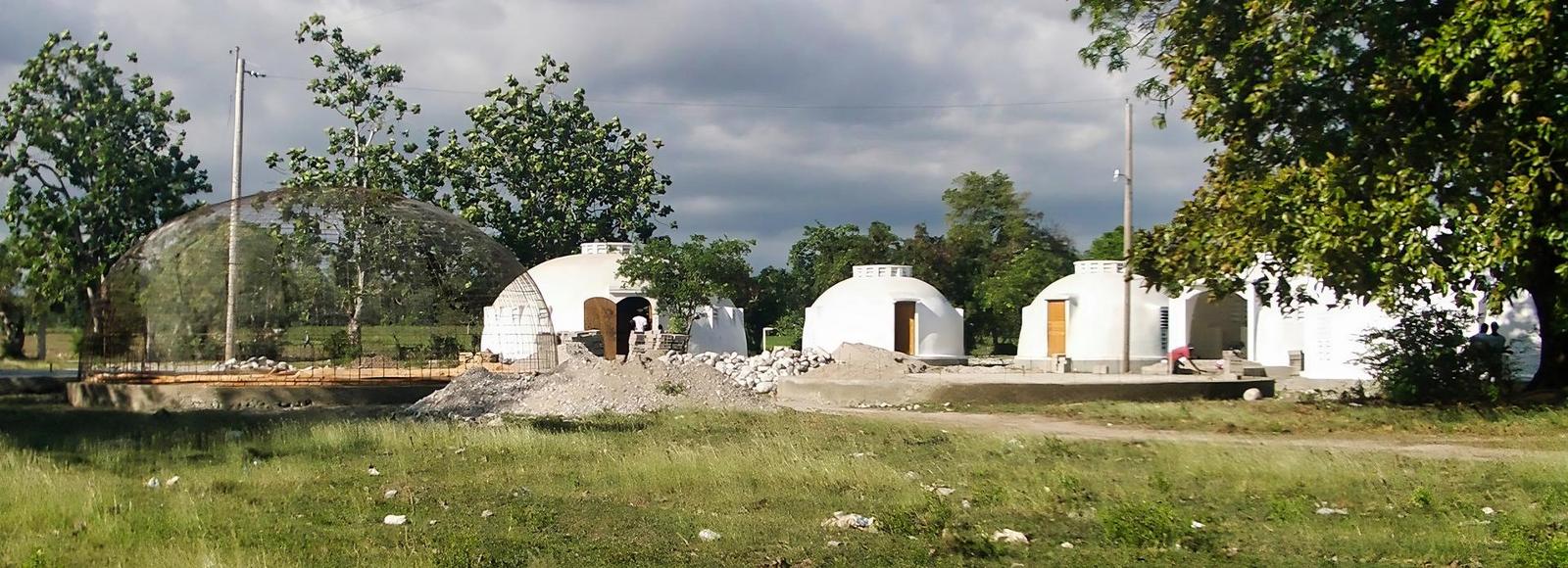
This little cluster of domes was the first to be built in Les Cayes, Haiti, at the ESPWA campus. These domes survived Hurricanes Sandy and Matthew with no damage.
Starting Small — Construction of a Seven-Dome Campus
When Wes Haws, long-time superintendent for DFTW, arrived in Les Cayes, he immediately began organizing the construction of a girls’ village. This first cluster of seven domes is a mix of 32-foot-diameter and 20-foot-diameter EcoShells intended to be used as dorms, classrooms, indoor recreation and sanitation. A security fence surrounds this little village. While Wes was there, a security guard was posted at the site 24/7. All the domes in this group are traditionally constructed EcoShells.
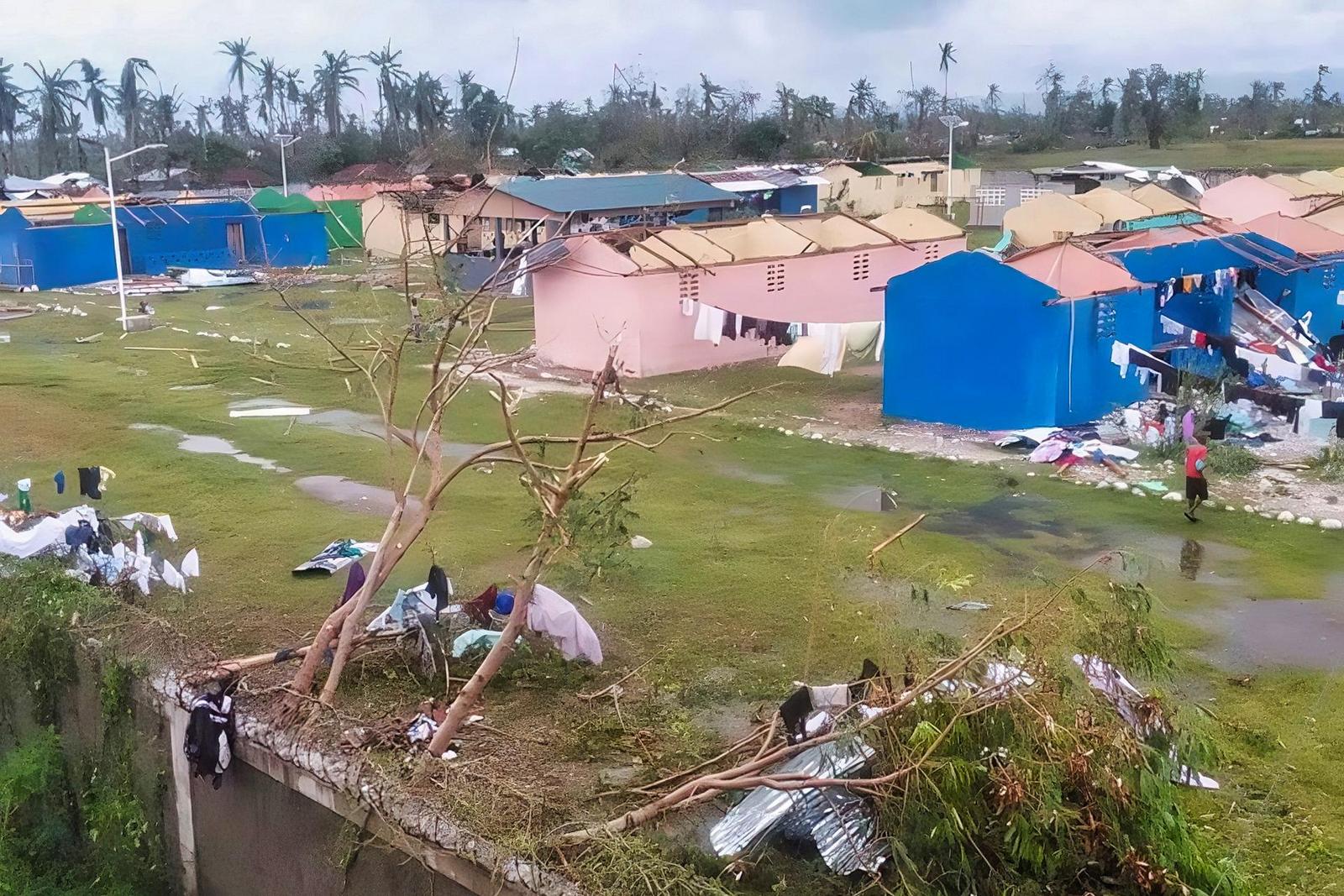
The devastation of Hurricane Matthew was unfathomable. Most of the conventional buildings at the ESPWA site were destroyed.
Hurricane Matthew and Sweeping Change Comes to ESPWA
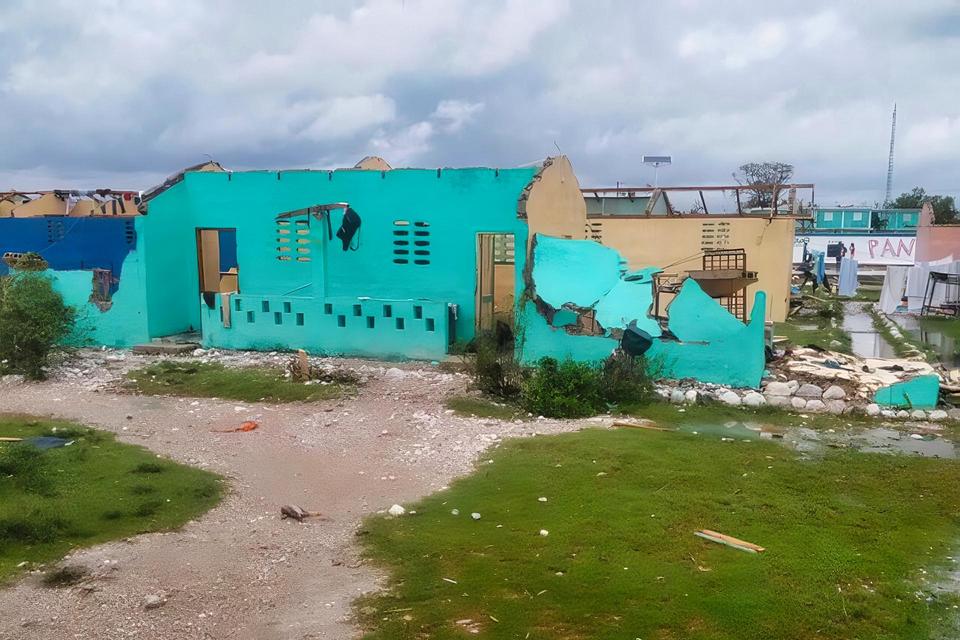
Hurricane Matthew made short work of conventionally built buildings everywhere in Les Cayes. Cameron Parker, Board Member of OOI, said that the landscape was completely unrecognizable after the storm.
In 2014, construction started on another little village for the youngest boys next to the girls’ campus. In addition, eight new dormitories were to be added to the existing boys’ campus to house the older boys.
In 2016, Hurricane Matthew swept through town. Luckily, the young boys’ village was complete, and all the stemwalls were in place at the older boys’ campus. Hurricane Matthew decimated the original boys’ village, and most of the conventional buildings had to be demolished and removed.
During this time, the American organization that funded the orphanage enlisted two independent contractors to perform an internal audit—Lisa Hyatt and Cameron Parker. While working on the audit—and with crucial help from trusted Haitian partners like Enel Andre (currently OOI’s Social and Community Development Manager)—they discovered that most children at the orphanage were not orphans. They were children who had been purposely separated from their families. Families desperate to provide a promising future for their kids had given their children up because of a false narrative.
The discoveries prompted the transformation of the orphanage. Lisa, Cameron and Enel took over the stewardship of ESPWA. They made sweeping changes and began reuniting children with their families.
Ultimately, a new organization was formed—Overture Outreach International (OOI)—and the complex was converted into a community outreach center.
ESPWA operated as an orphanage for more than 20 years, where hundreds of children lived in residency because their families could not provide basic support such as education, nutrition, safe shelter, and medical care for their children. Most children had one or more living parents, and the others had close family members willing to care for the child.
Unfortunately, this problem is not unique to the campus at Les Cayes. In 2017, CNN published a report online which states that the government of Haiti believes a majority of children living in orphanages in Haiti have at least one living parent. The same CNN report describes in detail the dangers children in institutions face in Haiti.
OOI has produced a booklet, “Orphanages are NOT the Answer!” with in-depth information and details about solutions being implemented to mitigate barriers to reunification of families in Haiti.
The orphanage-full-of-children-who-are-not-orphans is not just a Haitian problem, either. The issue is a global one. Lumos, a nonprofit studying the situation, has produced some eye-opening fact sheets that claim that over 8 million children are living in “orphanages” and that only about 20% of them worldwide are, in reality, orphans.
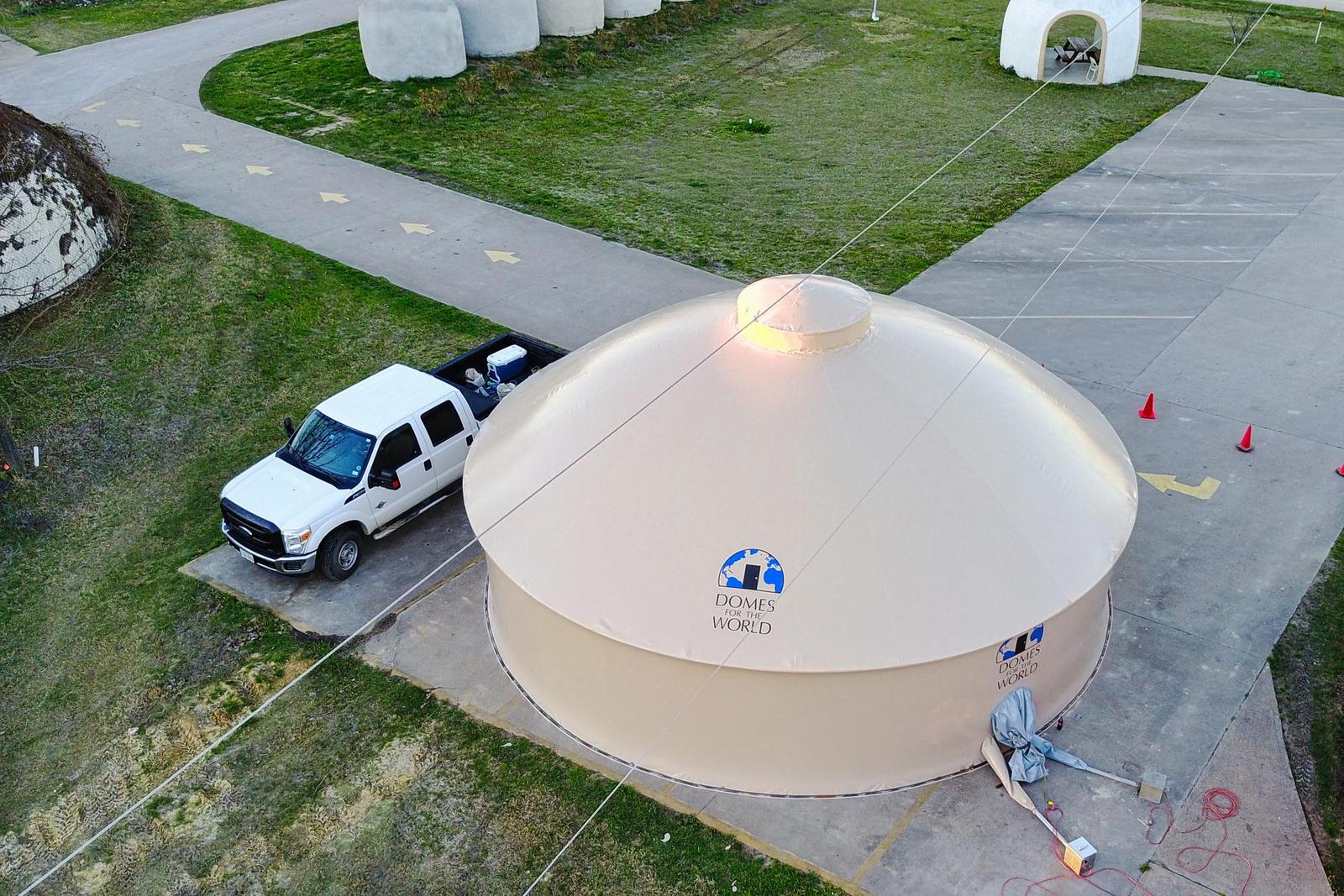
The custom Airform for the EcoShells in Haiti was inflated at the Monolithic Dome Institute before shipping to Port-au-Prince.
New Design Used for Construction of All Domes After 2016
Because of lessons learned when creating the girls’ campus, Cameron Parker (Board Member and Construction Coordinator of OOI), Andrew South of DFTW and Mike South of Monolithic got together and developed a new construction system for Haiti. It utilizes a custom EcoShell Airform based on the transition ring Airforms, sometimes used to construct Monolithic Domes.
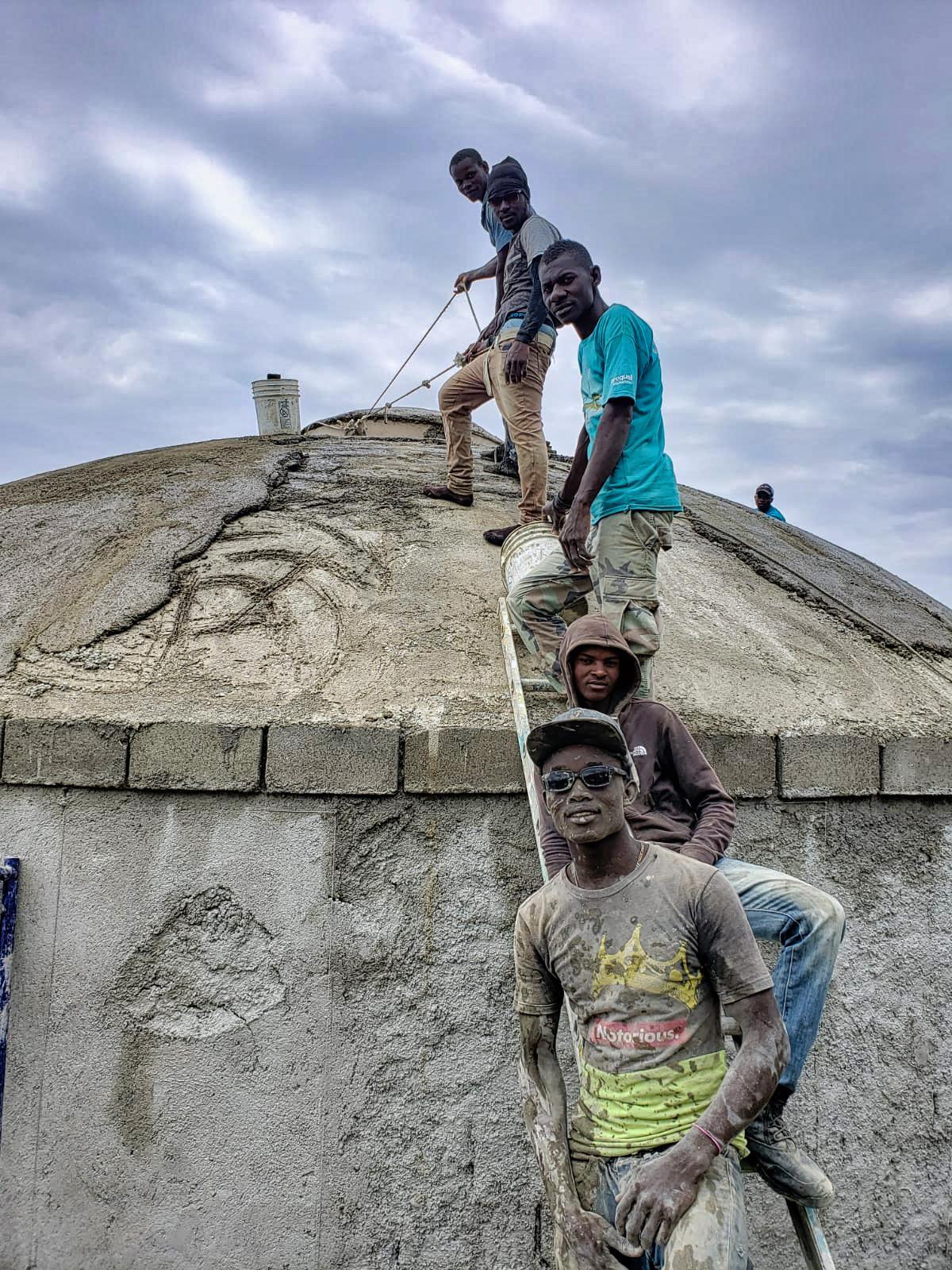
Volunteers in Tiburon, Haiti, create a human chain of buckets of concrete ready to be troweled onto the dome’s roof and walls.
The new construction process starts with a concrete block stemwall. Next, a foundation is poured, and the Airform is attached to the slab and the top of the stemwall. After the Airform is inflated, rebar is tied to the structure in a grid pattern. Next, concrete is troweled over the exterior of the entire structure and the Airform. After the concrete cures, the Airform is removed, and the interior surface is troweled smooth.
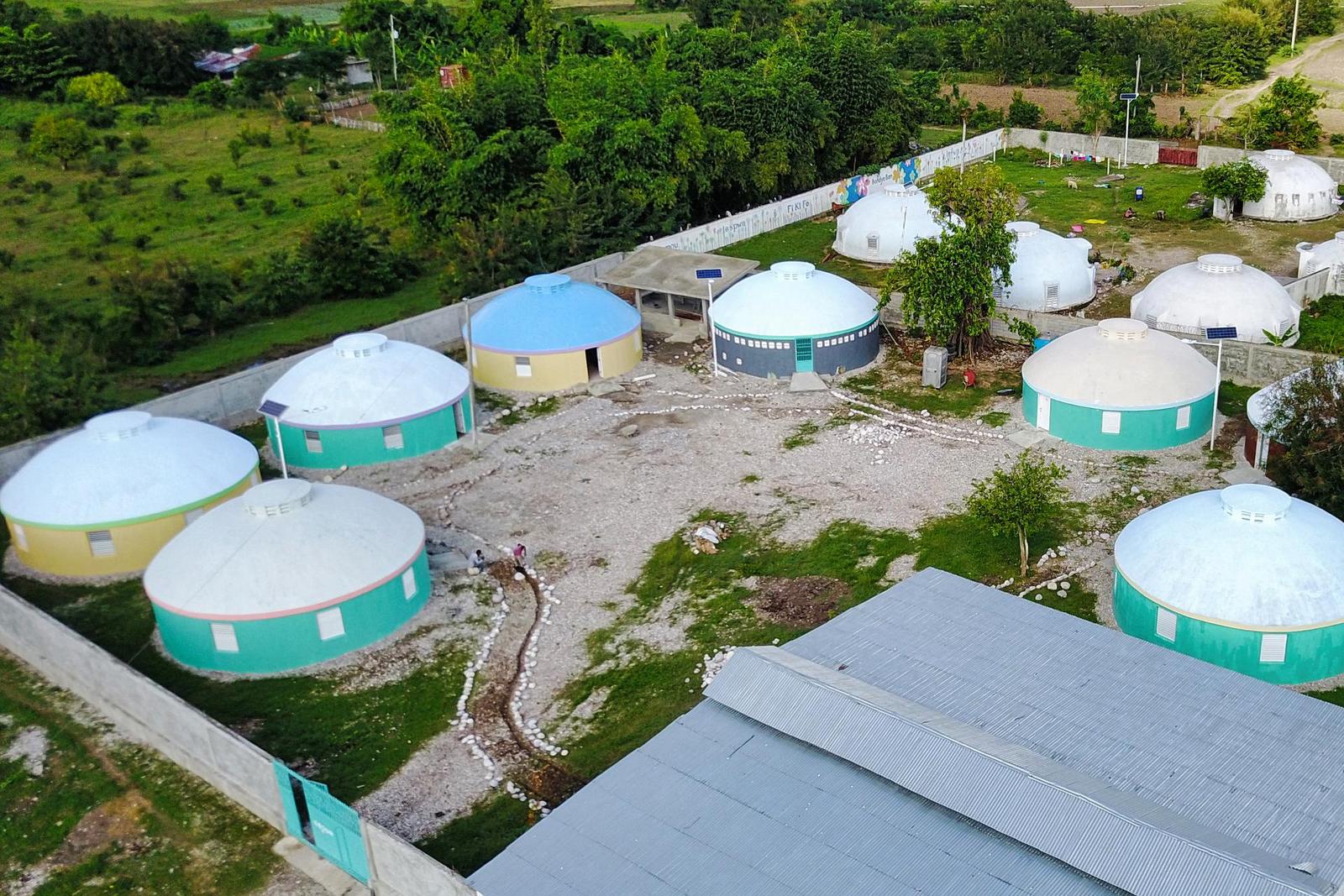
The second cluster of domes built at the Espwa Campus was construction next to the original girls’ village. This little village was initially meant to house the youngest boys.
The Second Campus Constructed Next to the Original Site
The first of the two campuses built at ESPWA after 2014 is located next to the girls’ village. It was meant to house the youngest boys. There are seven 32-foot diameter dome homes and one 32-foot diameter sanitation dome with toilets, sinks and showers.
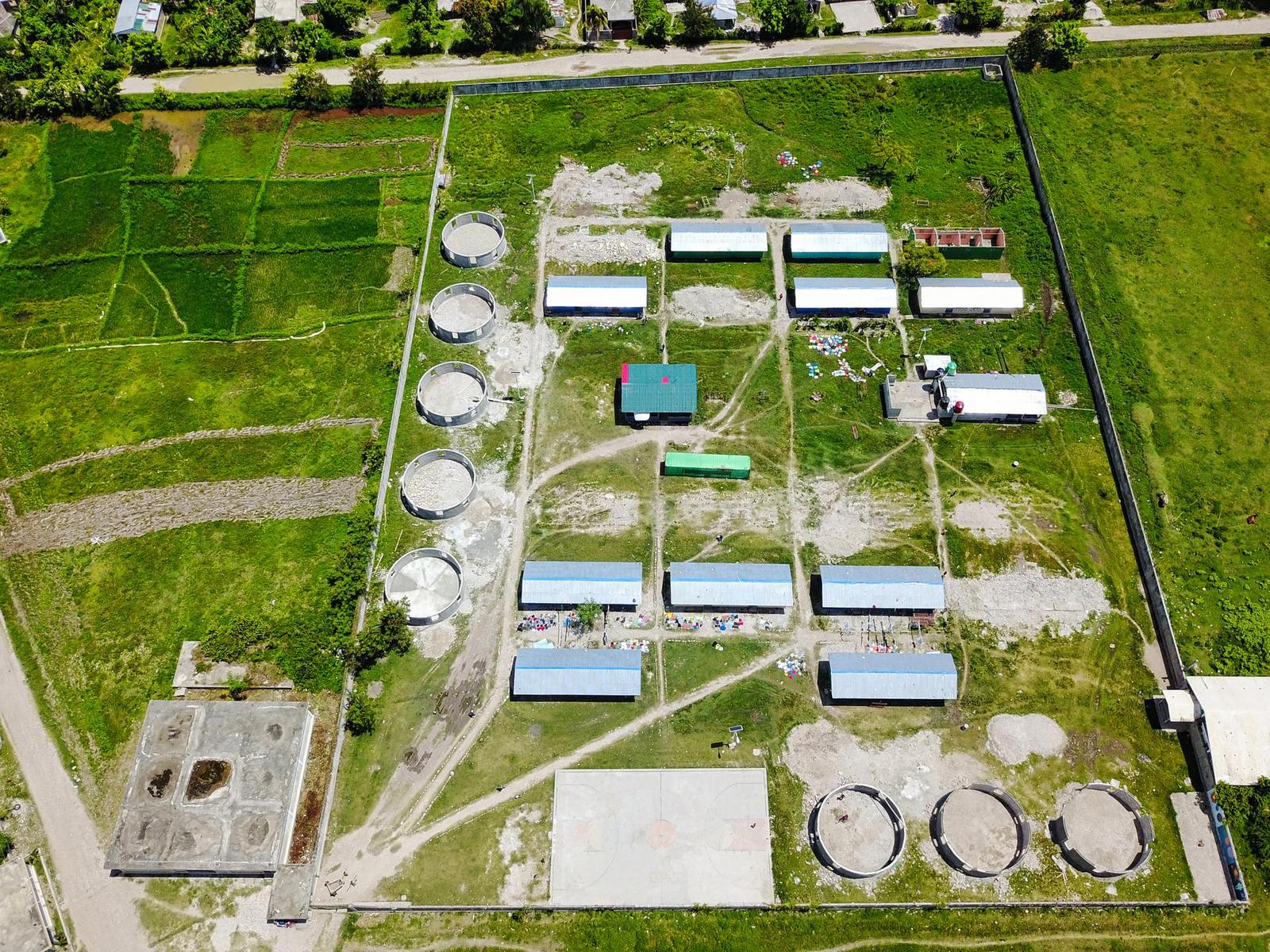
When hurricane Matthew struck in October of 2016, the primary school (the girls’ village) campus was finished. The secondary school (the young boys’ village) was mostly built, but the teenage boys’ domes only had the stemwalls finished.
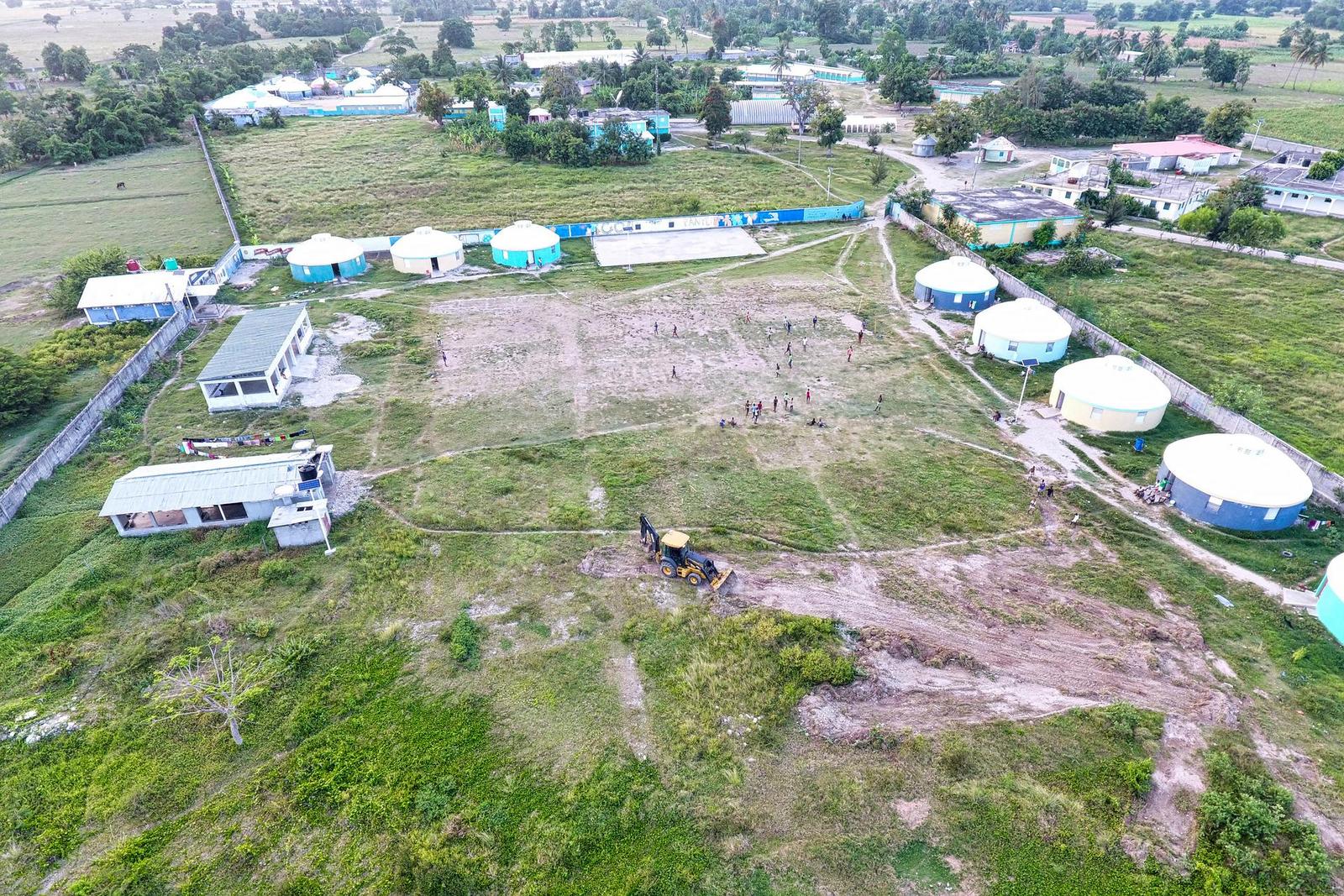
Zoom in to see the kids playing! The hurricane severely damaged or destroyed most of the existing structures at the teenage boys’ site. Fortunately, no one was hurt as the boys had been moved to the primary school for safety during the hurricane. The land was cleared and is now used as a soccer pitch!
The Third Campus in Les Cayes Built Around a Soccer Pitch
Before the hurricane, the original teenage boys’ village had several conventional buildings in the middle of the property. Nine dome dorms and sanitation facilities were planned to be built around the perimeter. The hurricane destroyed most of the conventional buildings, and they had to be removed. Today, this campus features eight 32-foot diameter domes.
Initially, another 804-square-foot dome was going to be constructed as a sanitation dome, but the existing sanitation building only needed some remodeling and new showers. Because they could use the existing building for sanitation, they built a sanitation dome near the first two campuses, which are now used as primary and secondary schools.
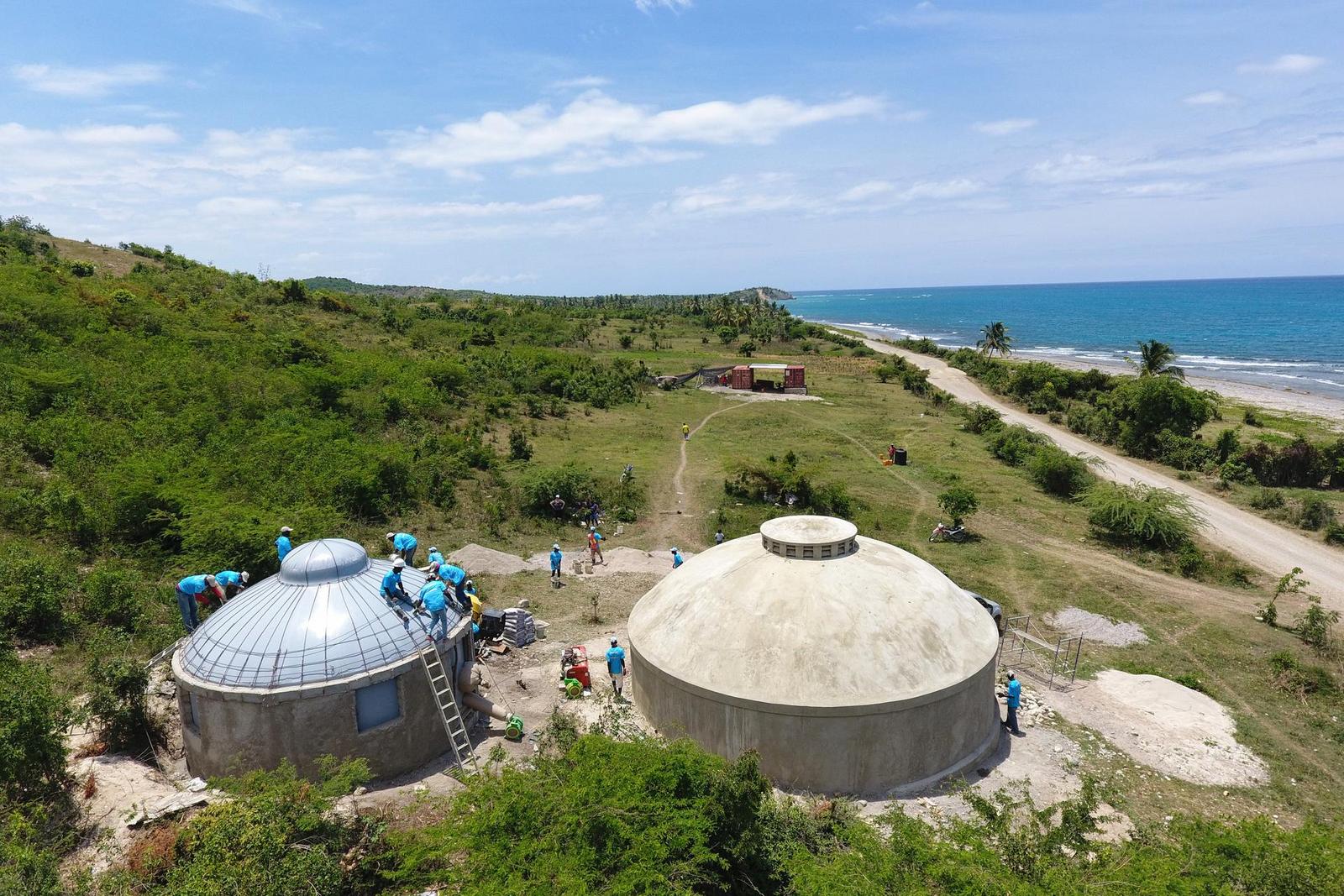
Tiburon is located in a beautiful area further west along the coast from Les Cayes. It is a rural and remote area. The two domes seen here were supposed to be homes, but the community had other ideas. They started holding school in the domes and OOI soon realized the disaster-resistant domes were needed as a community outreach center.
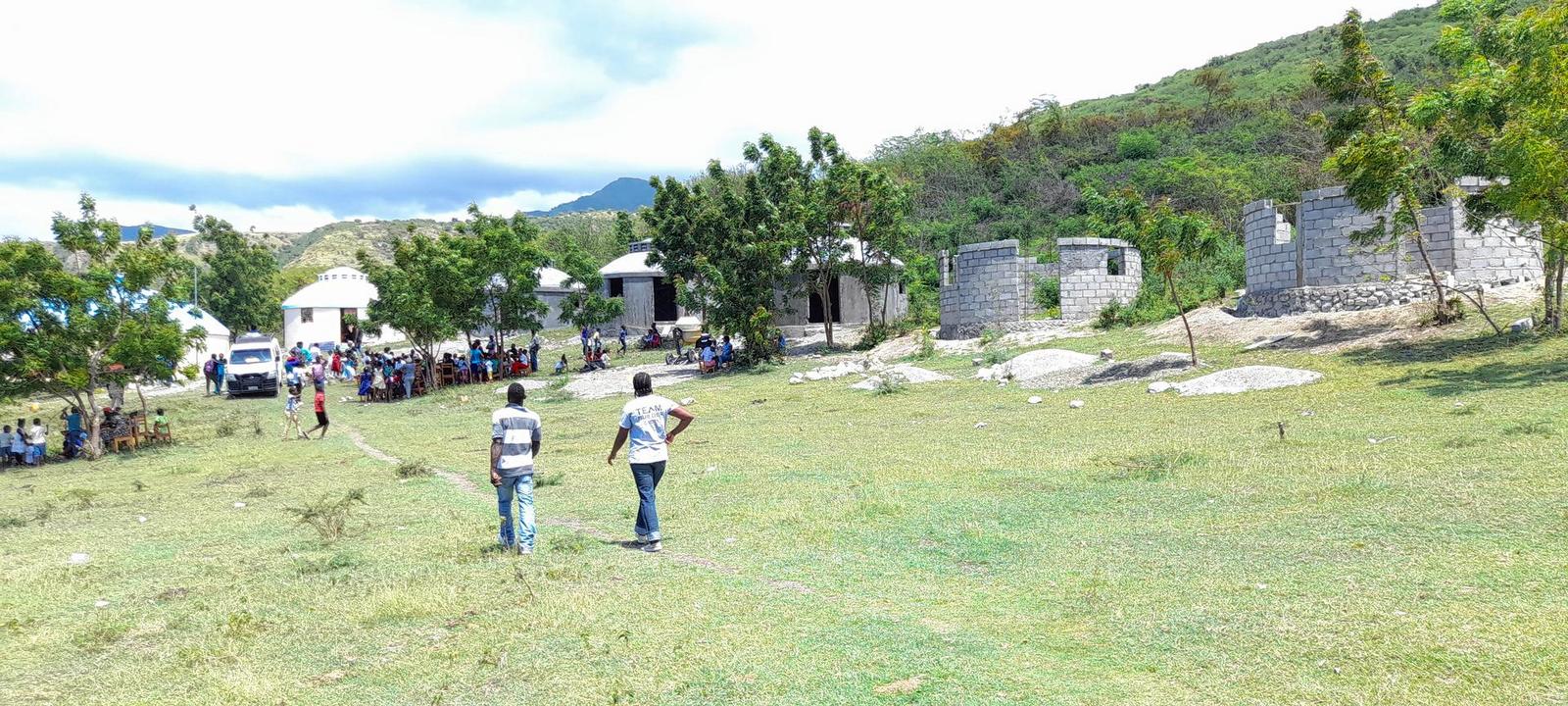
After the first two domes at Tiburon were complete, the locals took it upon themselves to pour foundations, make concrete blocks, and build stemwalls for several more domes! So far, five domes have been completed and funding is needed to finish the rest.
Tiburon and Self Determination
The original plan for building domes in Tiburon included building a few houses near the coast. As soon as OOI completed one dome, the community began using it as a school! OOI left cement and a concrete block-making machine at the site, and the villagers took it upon themselves (with OOI’s blessing and a little consultation) to lay a second and third (and fourth, fifth and sixth) foundation and began constructing stem walls for even more domes.
OOI soon realized that the need for disaster-safe community centers scattered carefully across rural Haiti was even more significant than the need for individual homes to be built as domes—although the demand for homes cannot be understated. People in the area live mostly in lean-tos and ramshackle housing.
To that end, OOI has built 100 conventional houses in Southern Haiti. The domes offer more protection from hurricanes and earthquakes, but the houses they are building are a significant improvement for the recipient families. The community centers offer shelter from natural disasters and provide a space where villagers can come for emotional support as well as the tangible help they would need to rebuild.

Two domes under construction in the remote town of Dori, located west of Port-au-Prince. These domes are now complete. More funding is needed to add bathrooms.
Domes in Dori, Inflation and Political Unrest
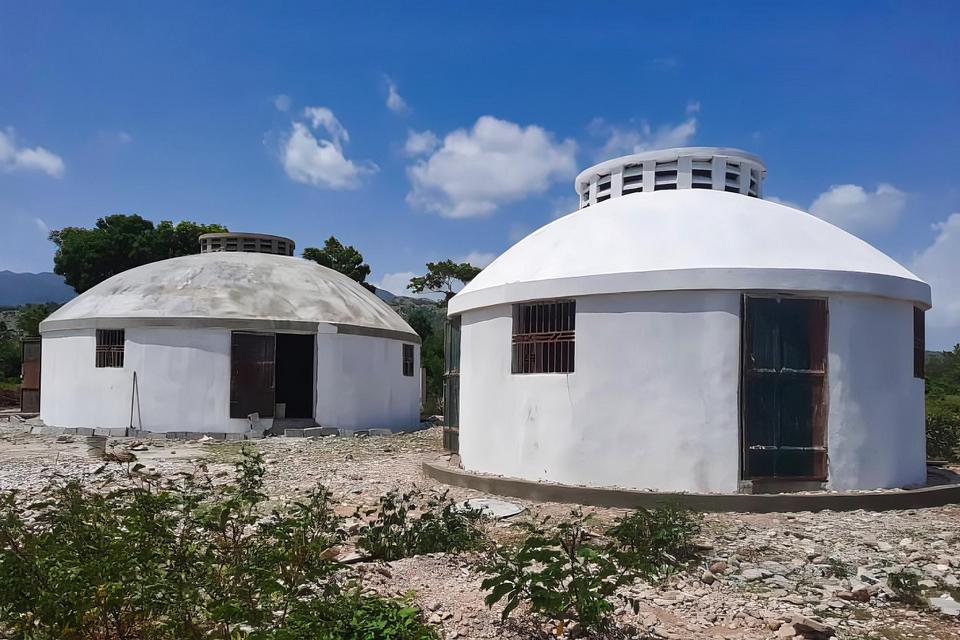
The dome on the left is 32 feet in diameter and the one on the right is 20 feet in diameter. This design is the same as the other domes DFTW and OOI have built post-Hurricane Matthew. They have a rooftop cupola with plenty of windows for cross ventilation. The white rooftops help to keep the buildings cool. The 32-foot dome roof should be finished being painted by the time this report is published.
OOI has finished building a two-dome community center in Dori. The domes are currently being painted. Unfortunately, due to political unrest and a 37% inflation rate, the construction took more money than was initially budgeted for the center. Moving materials to Dori was dangerous—gangs control the entirety of central Haiti. Supply runs had to be fast and sometimes executed under the cover of darkness.
The community was planning to help construct two bathrooms with a simple septic system, but they are struggling to take care of themselves during this time of upheaval, and the situation continues to worsen.
Currently, there is no safe way to travel by car or truck from the south of Haiti, where OOI’s headquarters are, to the rural north, where Dori is. The only way to move supplies to Dori is by small airplane. However, OOI is able to overcome these challenges and is continuing the work.
Orphanages Emptying Across Haiti
The Haitian government is making an earnest effort to educate the public about the orphanage problem in Haiti. They are working with organizations like OOI to reunite families.
From The Haitian Institute of Social Welfare and Research’s (IBESR) Facebook Page
IBESR is waging a fierce fight against the precarious conditions of institutional care. For almost six years, not a month has gone by without the closure of several orphanages. Nearly 160 have been closed to date.
From OOI’s 2023 bi-annual newsletter:
Beginning in 2020, Overture International transitioned ESPWA from a traditional orphanage to a thriving child development and family strengthening center, reunifying 252 children with their families. To this day, all 252 children remain unified with their families, and 170 of them have just recently completed their three-year individualized support plans, ultimately equipping and empowering them and their families with the resources needed to realize independence and self-sufficiency! They are now role models in their communities for family preservation and for the remaining 82 reunified families who are still in the midst of their family-strengthening journey.
OOI has a strong network of trusted Haitian partners and is gaining a reputation for being able to take on the big challenges. As a result, two orphanages have relinquished control of their operations to OOI. They rescued 25 kids in April from an orphanage that gangs had attacked twice. Two older youths had already died in the violence. Most of the children from that orphanage have HIV. They rescued 35 kids from another similar situation and moved them to a safe house. Most of the children from these two orphanages will need foster families.
Fostering is a new concept in Haiti. Only two regions have been successful in finding and training foster families. OOI is having success and working closely with the Haitian government’s organization, The Institute of Social Welfare and Research (IBESR).
The Future
OOI has designated five more areas where community centers need to be built, where families are experiencing extreme poverty. These areas are low-producing and less accessible. Experience in Les Cayes, Tiburon and Dori over the last decade has proven that the dome community centers are critical to earthquake and hurricane recovery response. The centers will also support OOI’s Social Support Model by providing access to food, counseling, medical care, parenting and job training, schooling and even emergency housing.
They hope to construct a community outreach center every year. In a phone conversation last week, Lisa Hyatt, Executive Director at OOI, said, “Can you imagine a community center a year? In five years, it could transform the south.”
Donations to DFTW to help fund their efforts to support OOI in Haiti. Your donation is tax-deductible, and 100% of the funds will go directly to construction equipment and a dome construction fund. Email rebecca@dftw.org if you or your organization is interested in donating.
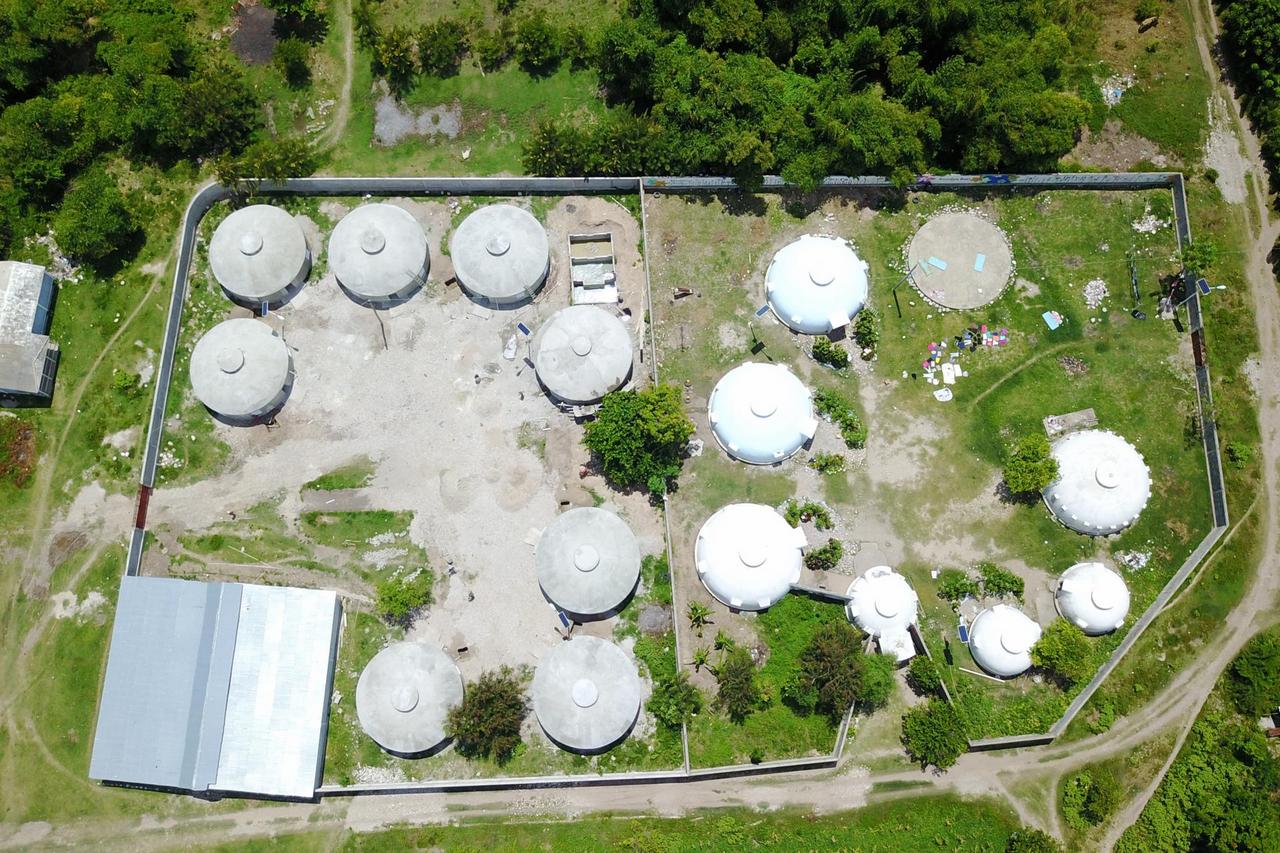
The second campus built at ESPWA was built using the transition-ring Airforms and concrete block stemwalls. The domes are all 32 feet in diameter. The first campus, on the right, was built using traditional Monolithic Dome Airforms and is a mix of 32-foot and 20-foot diameter domes.
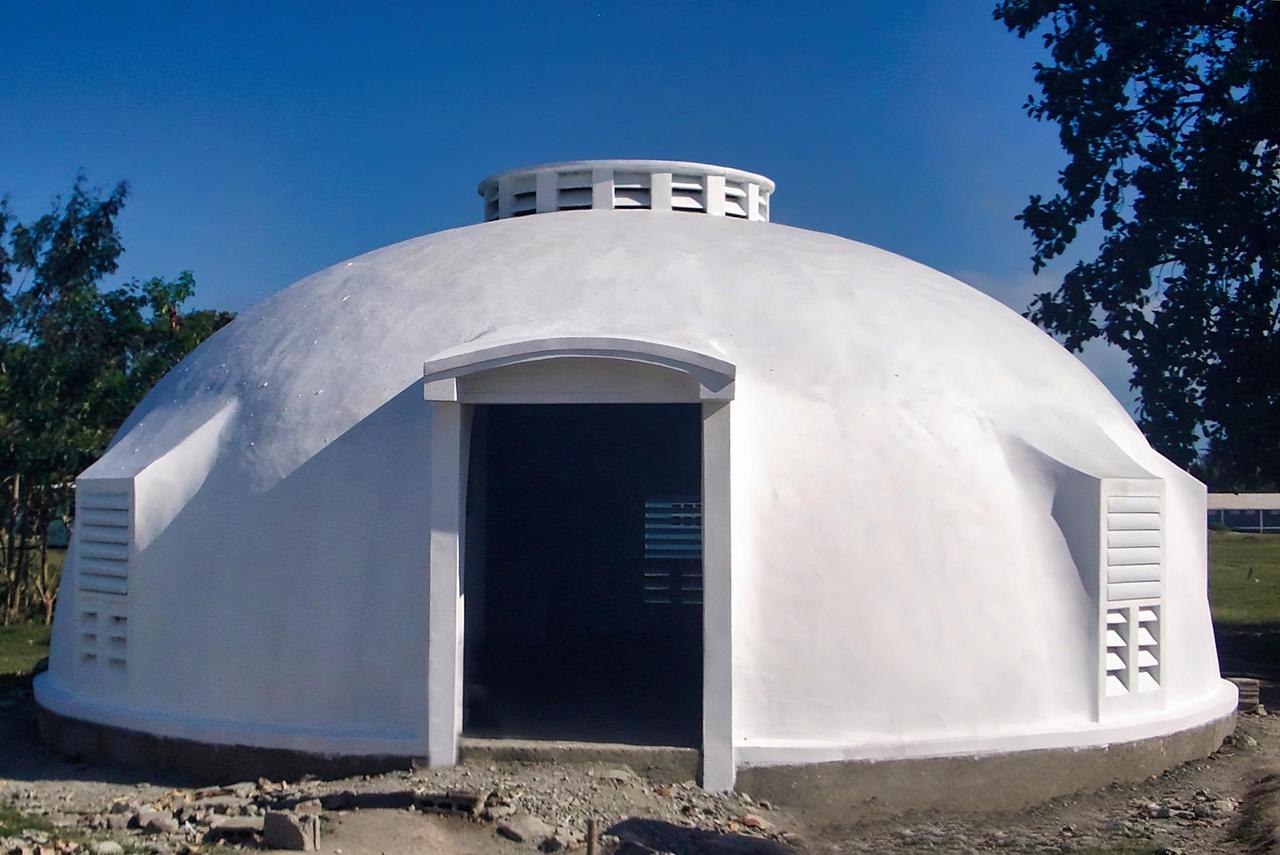
This is the sanitation dome built at the original girls’ campus. It housed the bathrooms and showers.
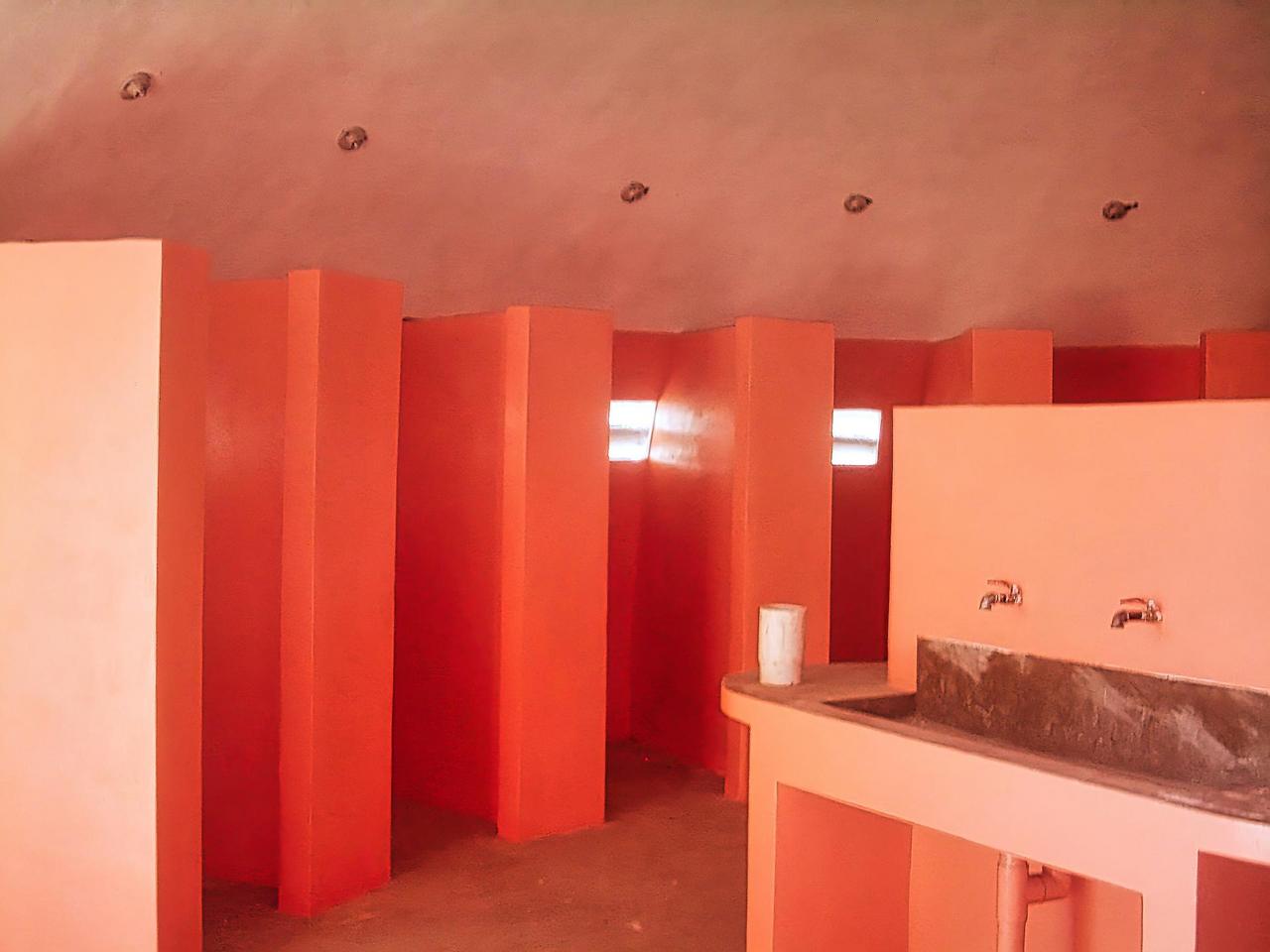
The bright colors chosen for the sanitation dome (showers and bathrooms) make it a joyful place to clean up.
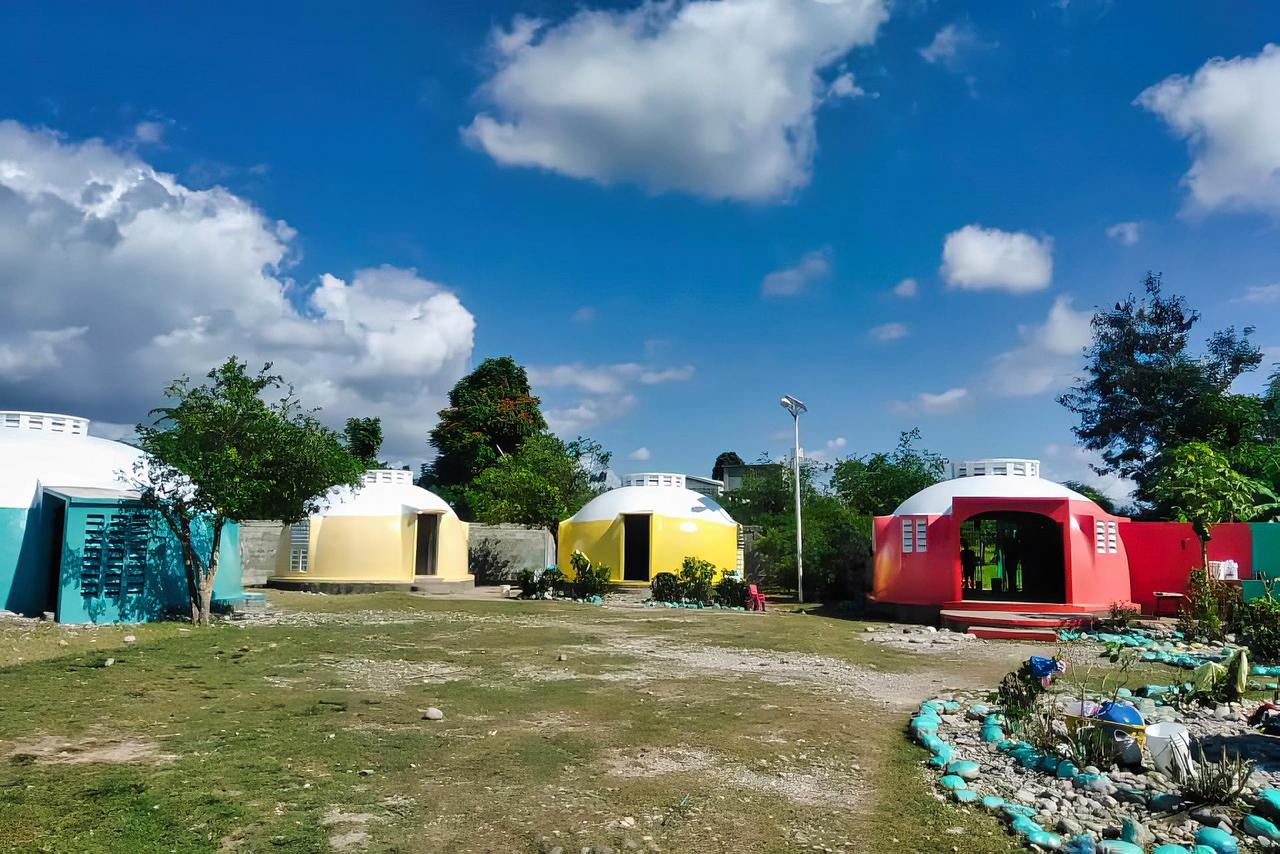
The first cluster of domes at Les Cayes recently got a cheerful facelift. The bright colors are more in sync with the rest of the domes located at the ESPWA campus.
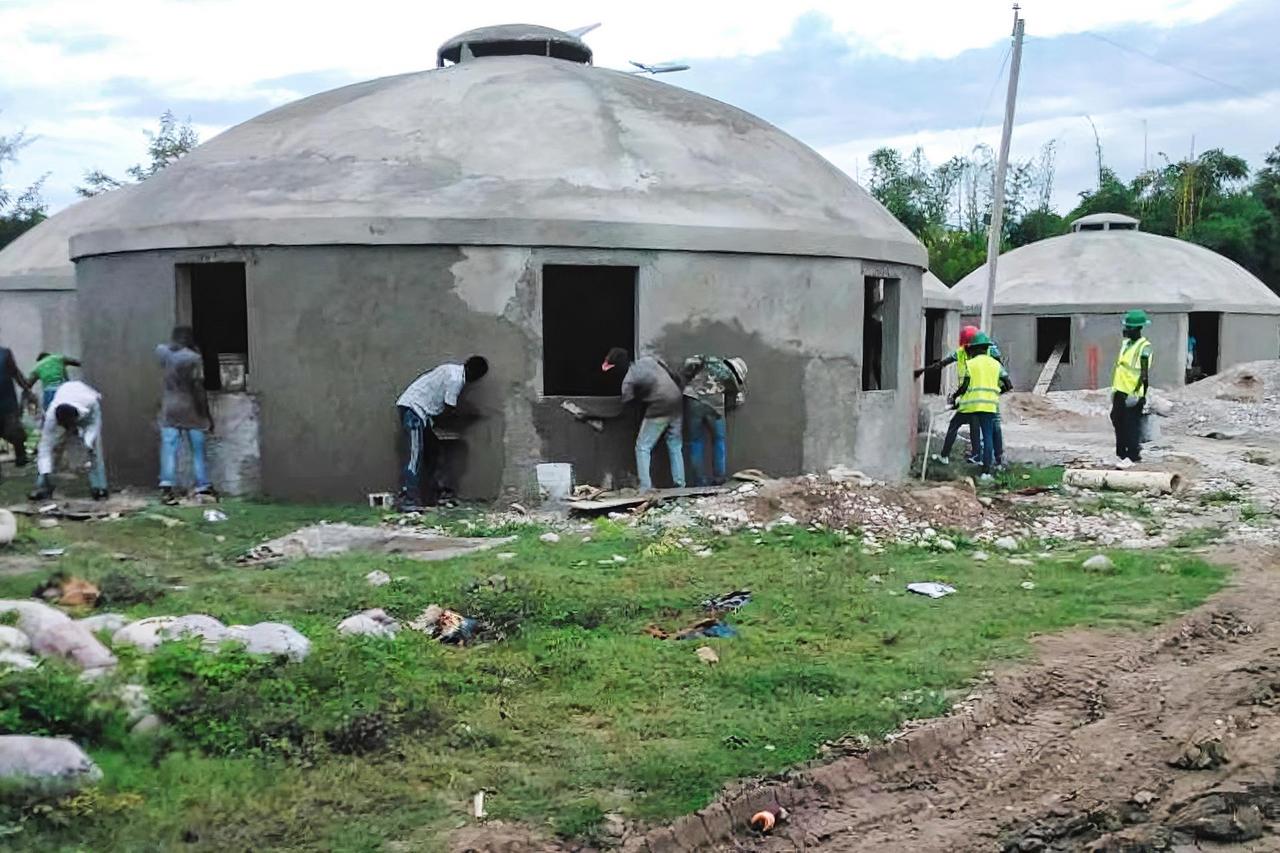
The crew trowels on the last coat of concrete to the dome. The concrete for the finish coats has very little pebbled aggregate.
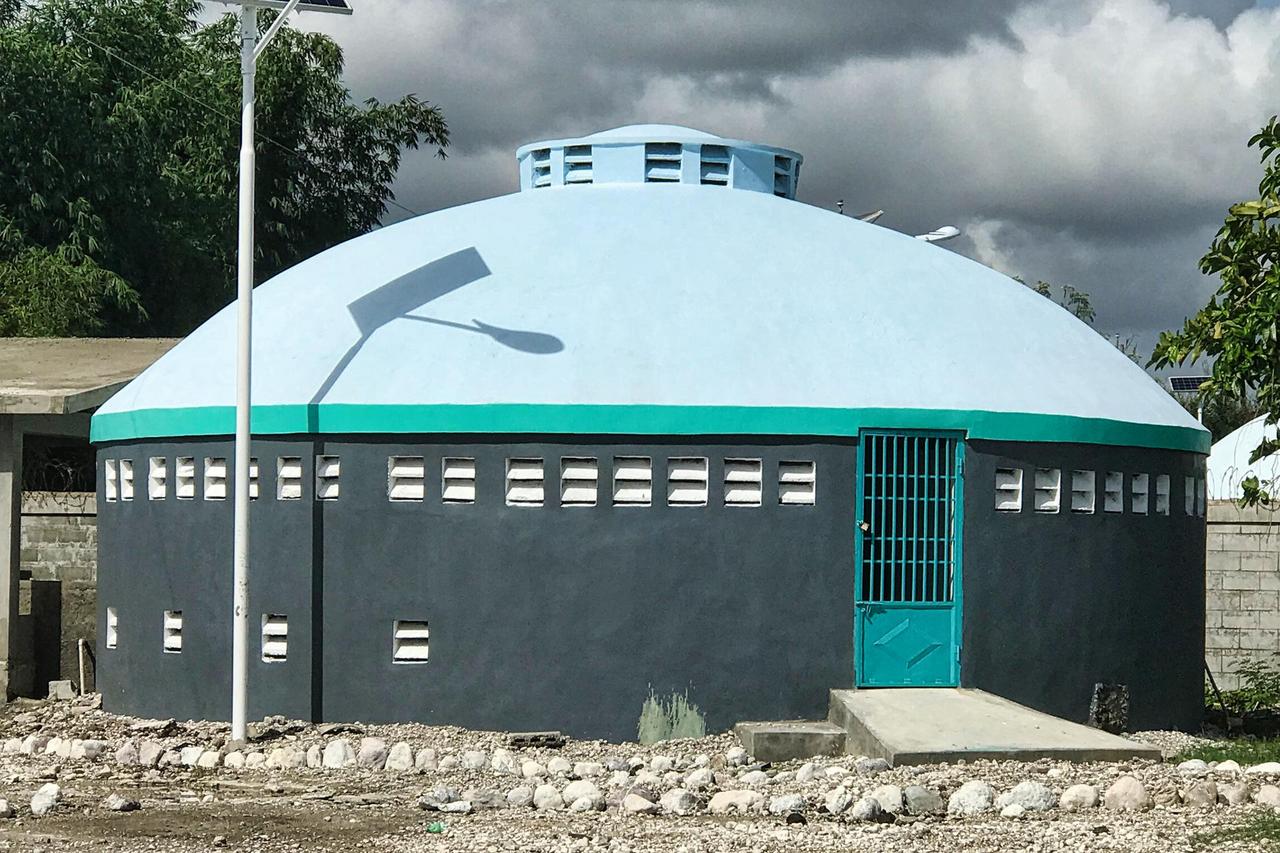
The new design of the EcoShells for Haiti includes vertical stemwalls and lots of additional ventilation in the sanitation domes.
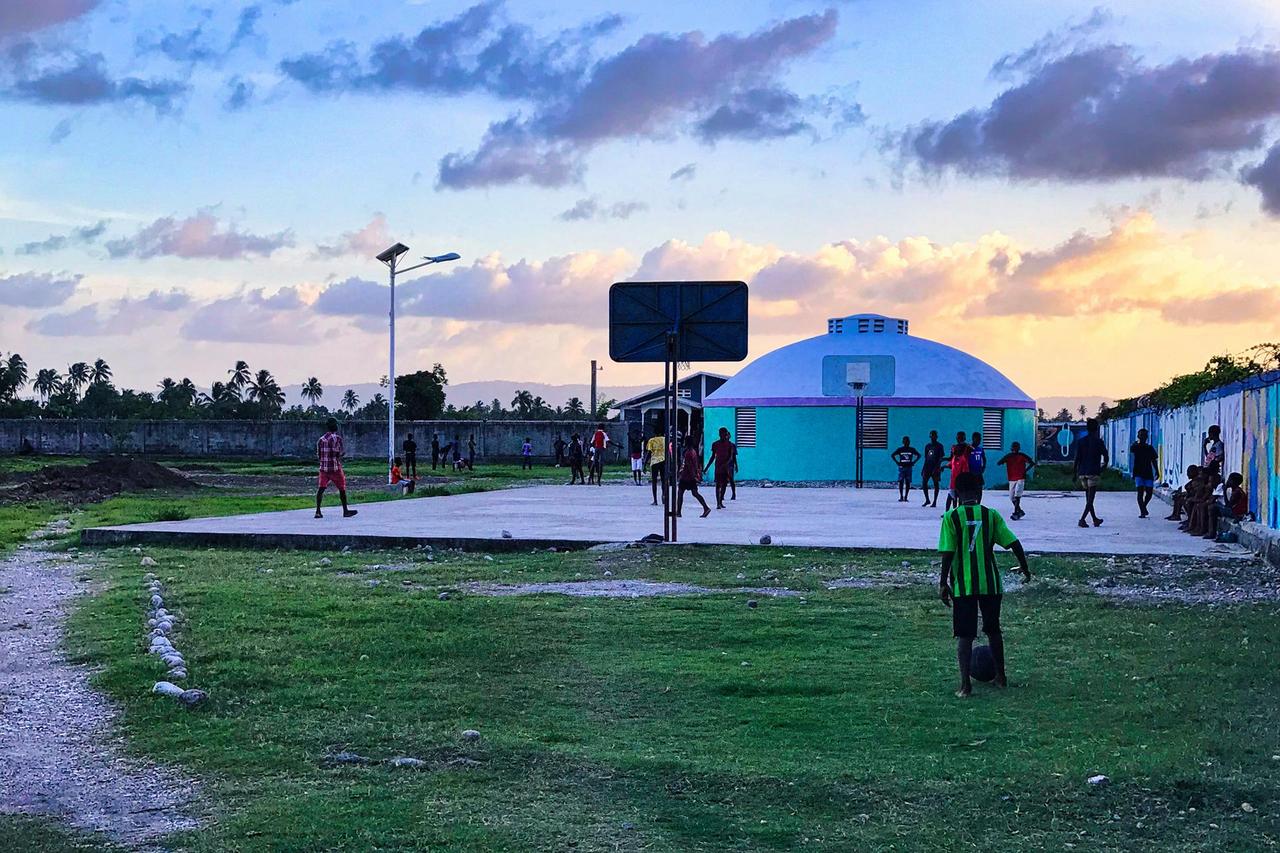
The sun sets on a beautiful day at the Community Center located in Les Cayes, Haiti. Children and adults enjoy the basketball court and nearby soccer pitch.
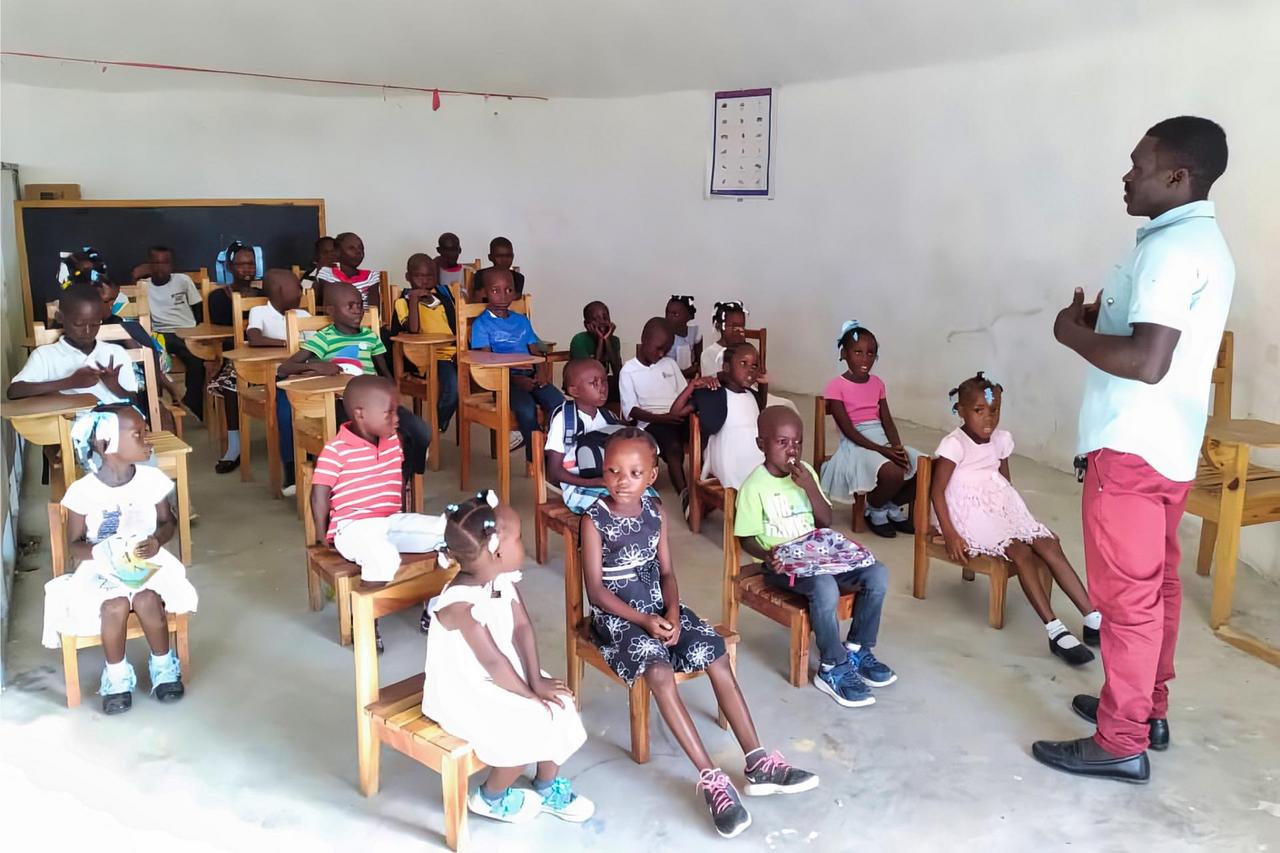
The school in Tiburon is held in one of the domes. It is the safest place for children to spend the day. EcoShells are earthquake and hurricane resistant.
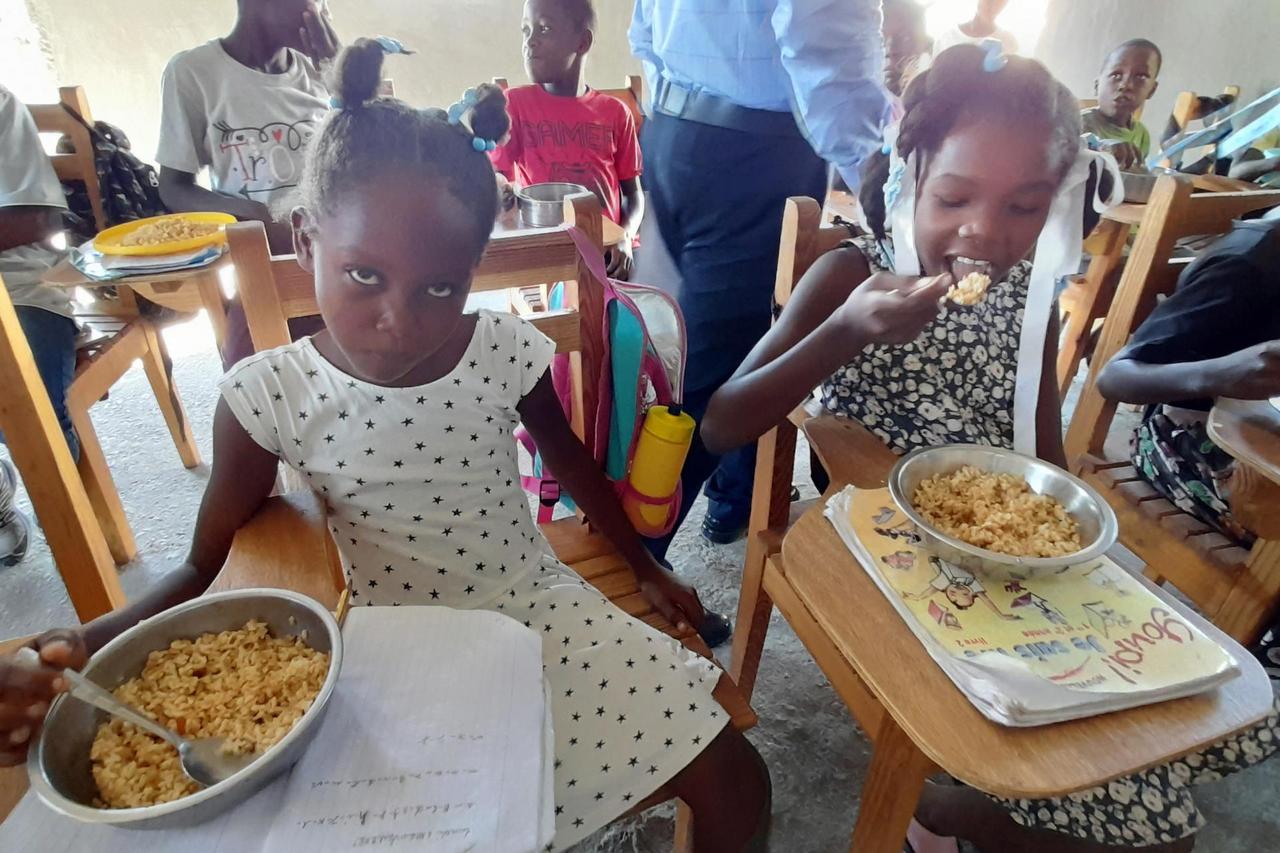
School in Tiburon includes more than just learning. Nutritious and vital meals are served to all the kids who attend.
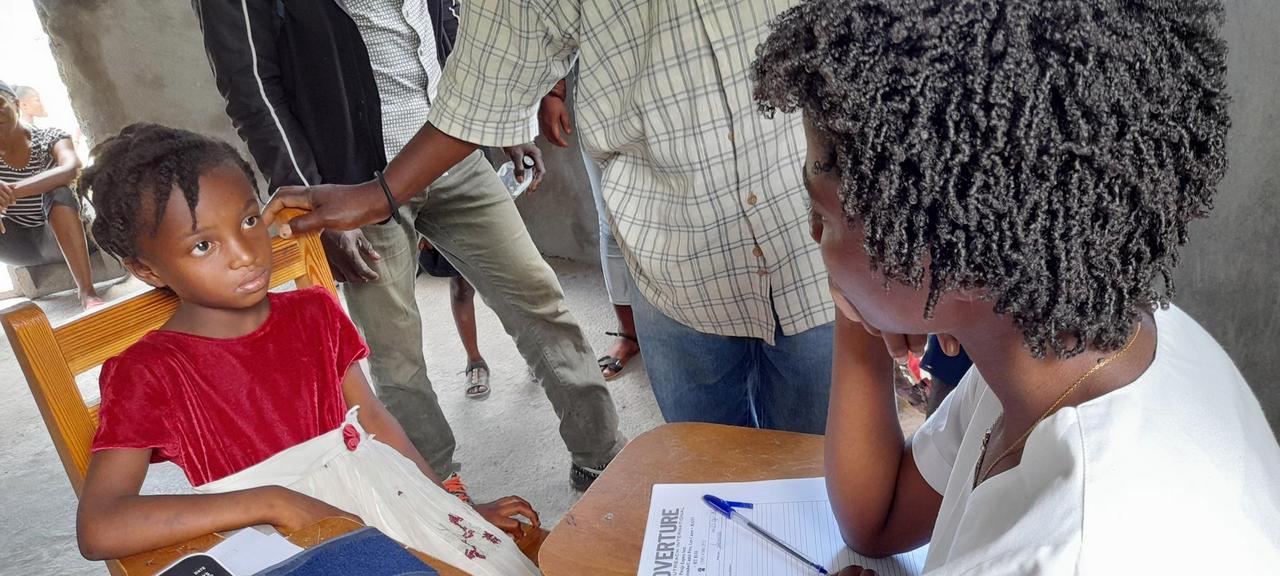
The medical clinics held at the Tiburon Community Outreach center are helping residents live healthier lives.
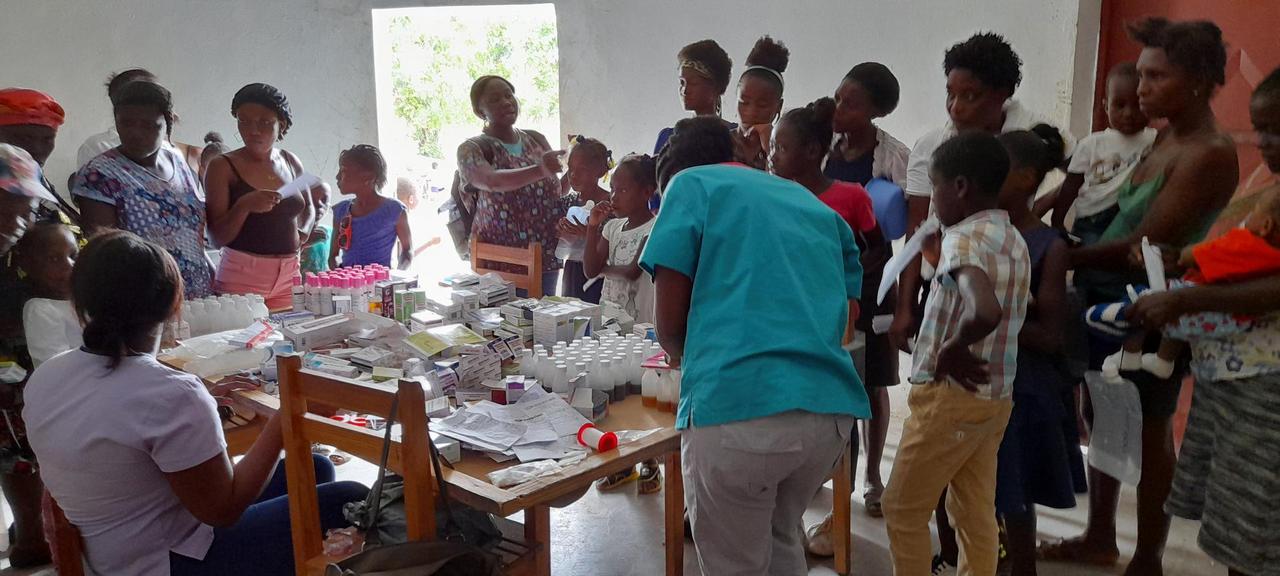
OOI’s work includes developing aid distribution programs, and medical clinics, as well as building secure facilities to store supplies and shelter community members during natural disasters.
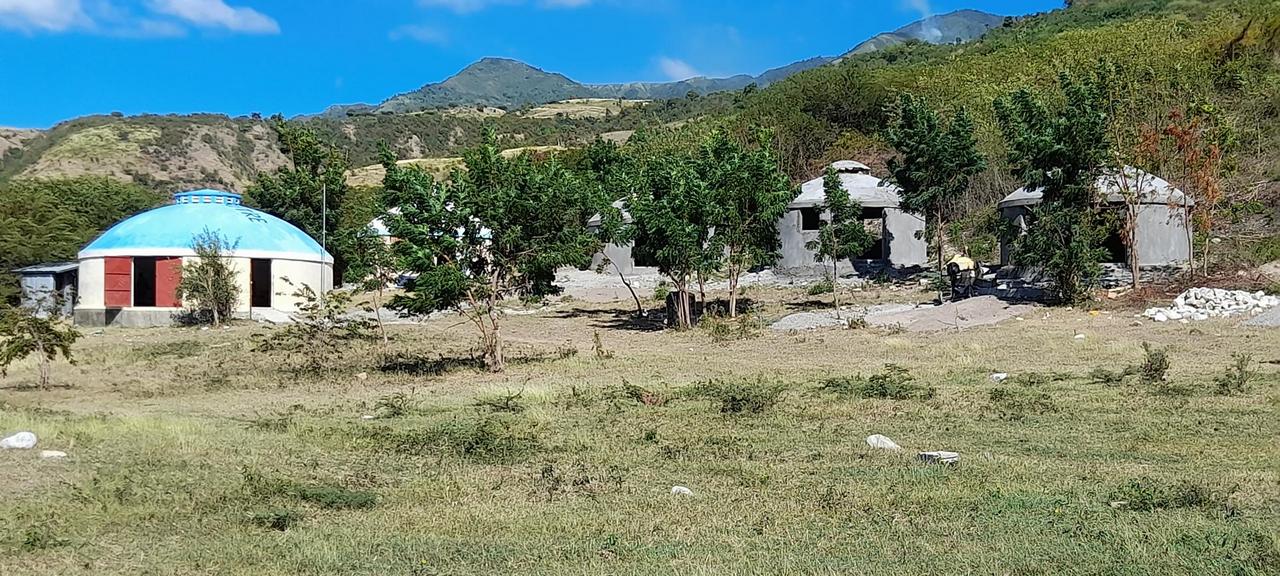
The Tiburon Community Center keeps growing thanks to efforts of the local community. Pictured here is one 32-foot diameter dome and four 20-foot diameter domes.
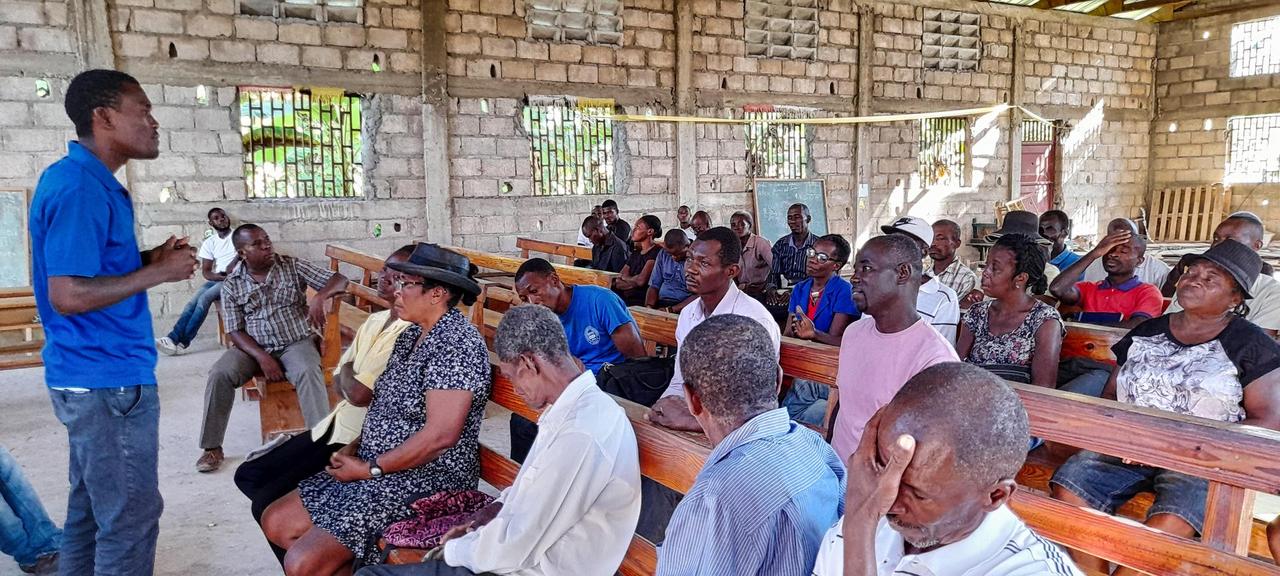
The town hall meetings include information about what other communities are doing to improve their situation and how OOI can help. The people define their goals and identify roadblocks. Nothing is built without direct community involvement.
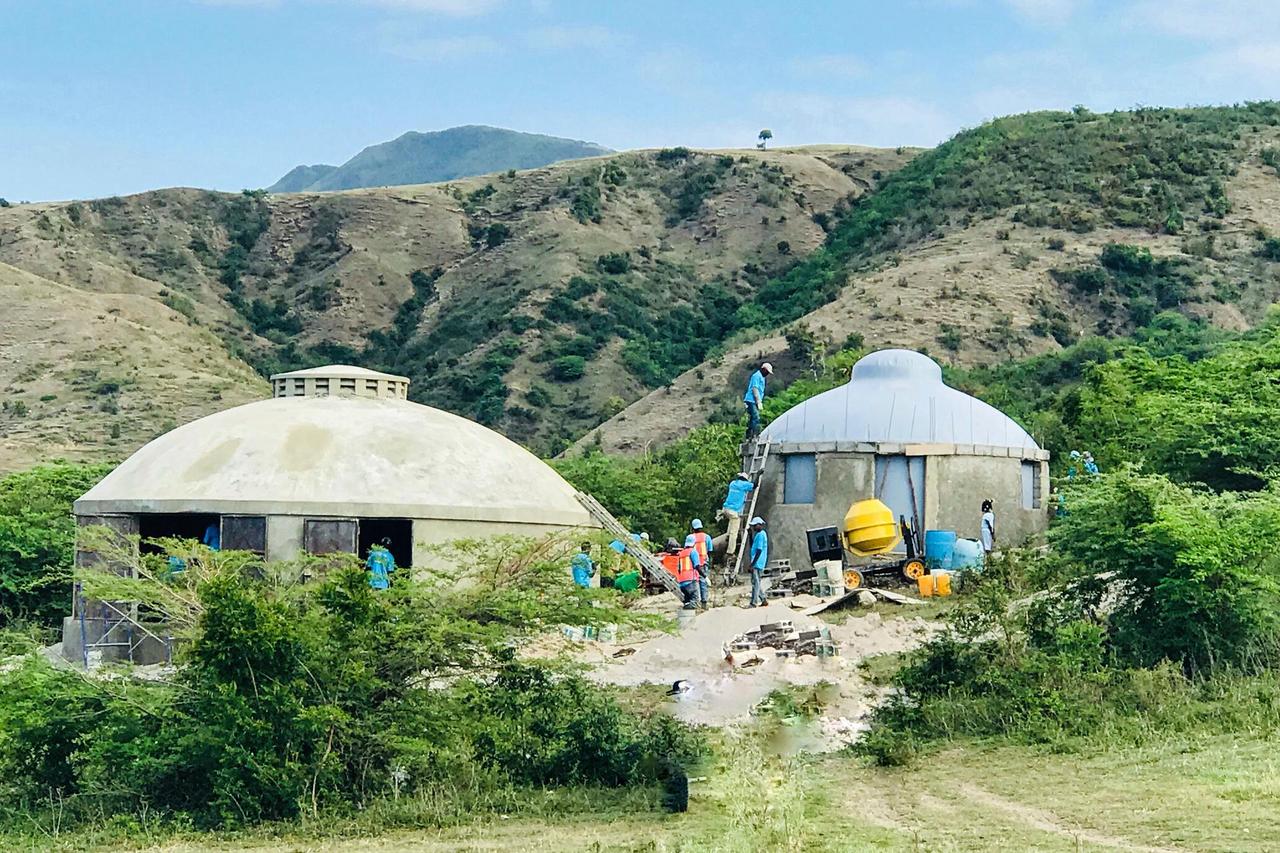
The first 32-foot diameter dome is complete. The 20-foot dome needs the grid of rebar placed before concrete can be troweled onto the exterior.
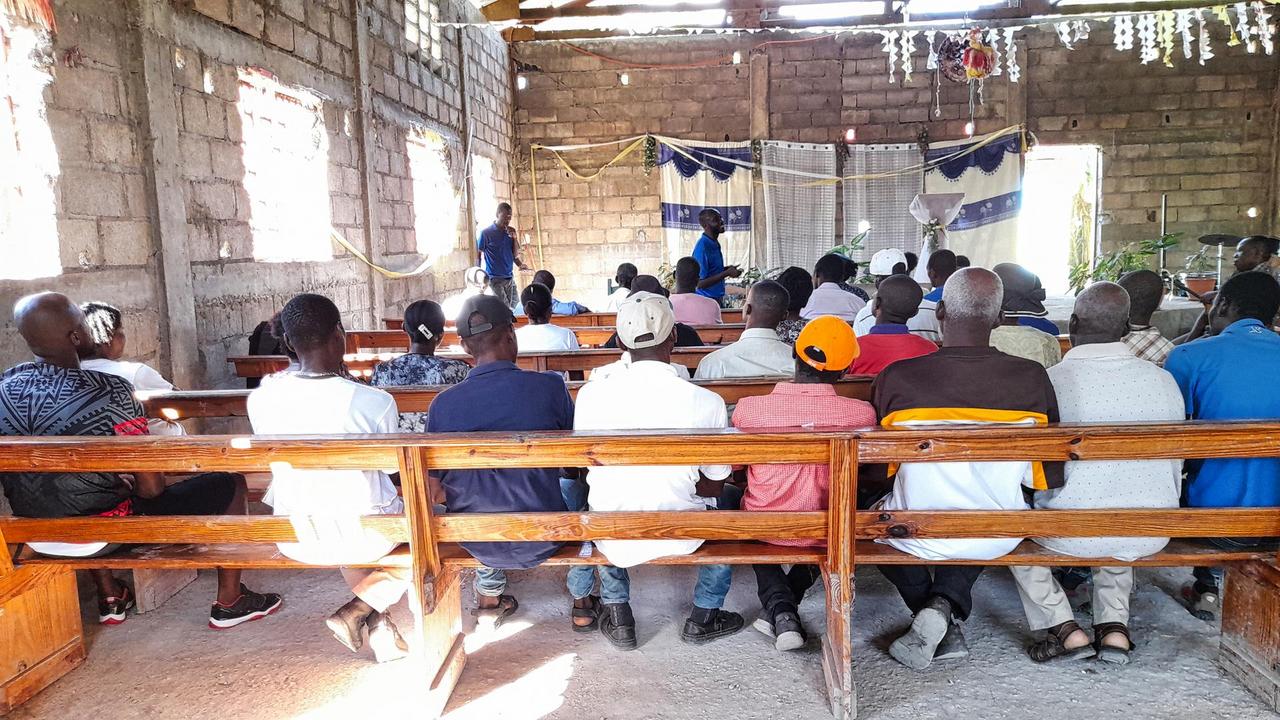
Before building a community center, OOI holds community meetings to consult with villagers. Community members direct the development.
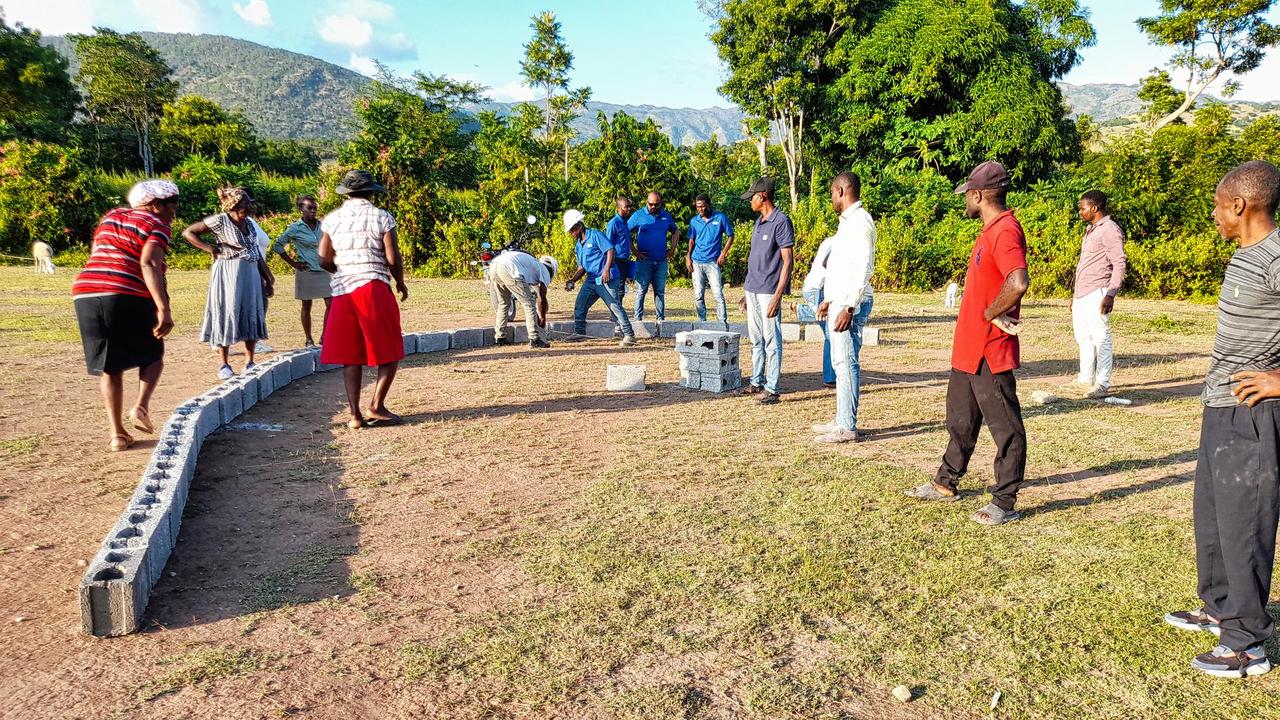
During a groundbreaking party in Dori, community members lay out a ring of concrete blocks where the EcoShells will be built.
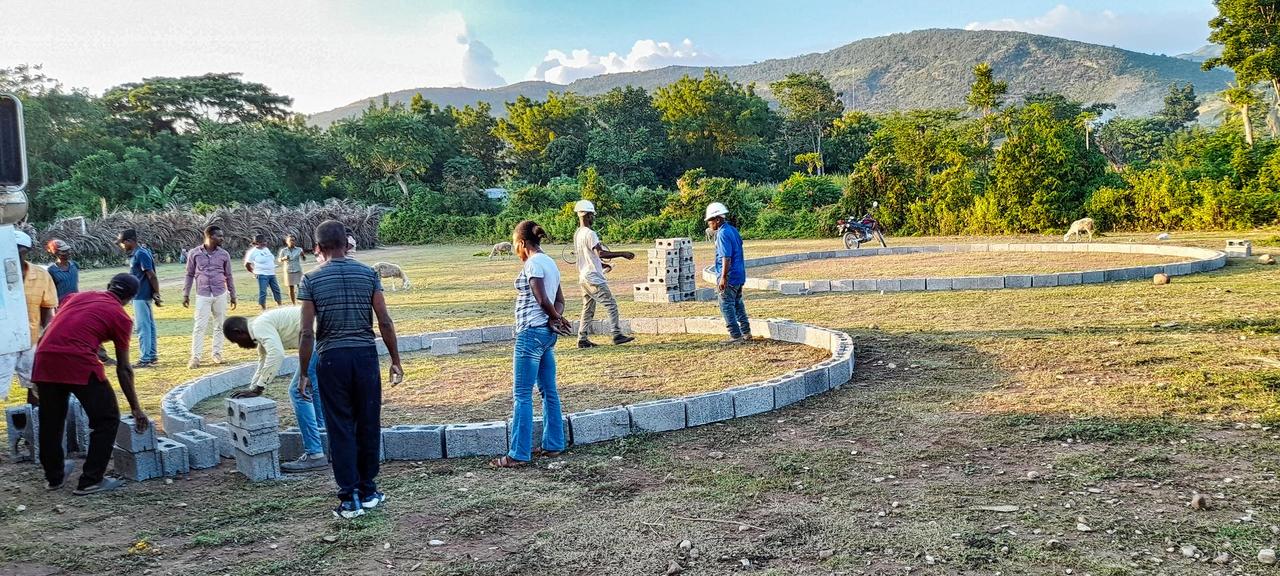
Villagers in Dori finish marking out the placement of the two domes to be built in Dori at a groundbreaking gathering.
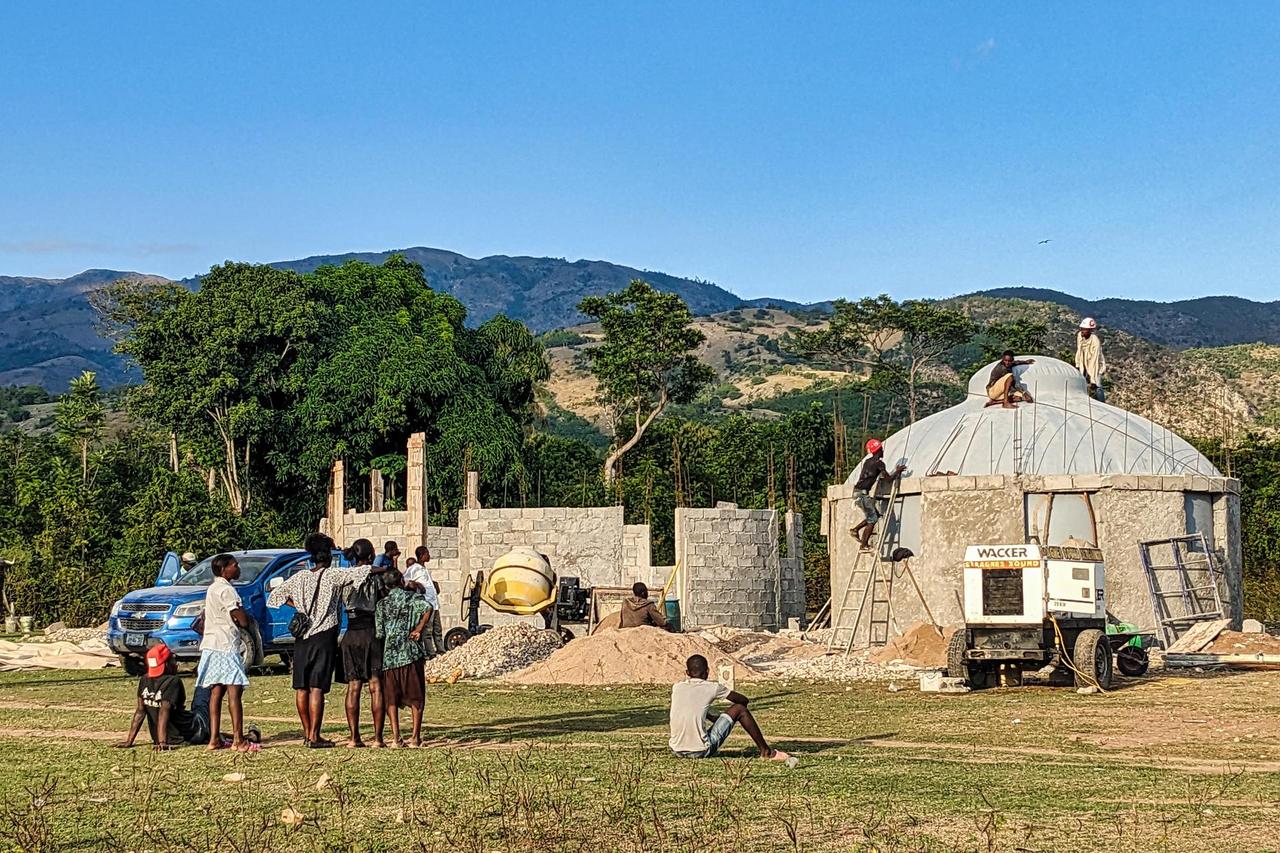
As construction moves forward, a crowd of onlookers in Dori gather to watch the community center take shape.
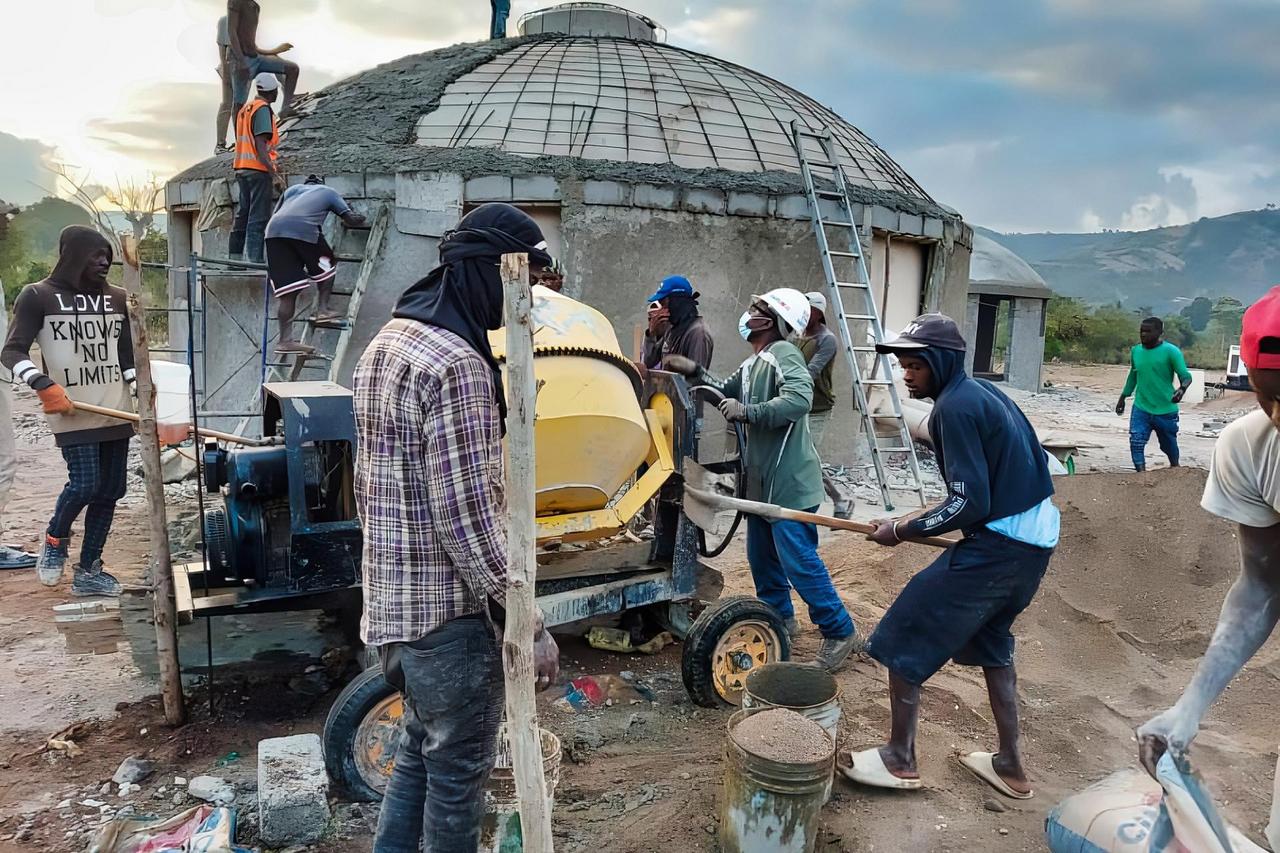
Construction of a 32-foot diameter EcoShell in Dori, Haiti, is well on its way. The rebar is set and the concrete is being troweled on.
